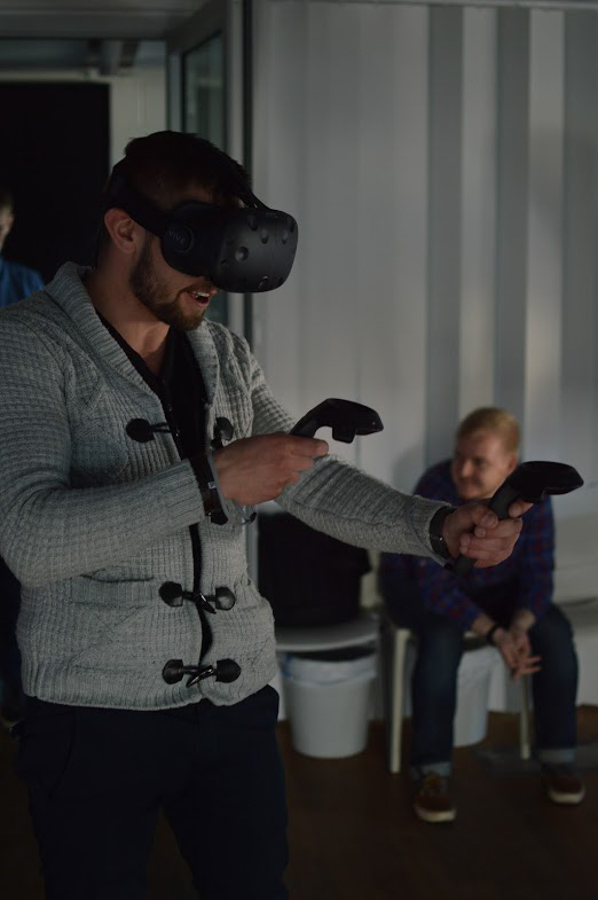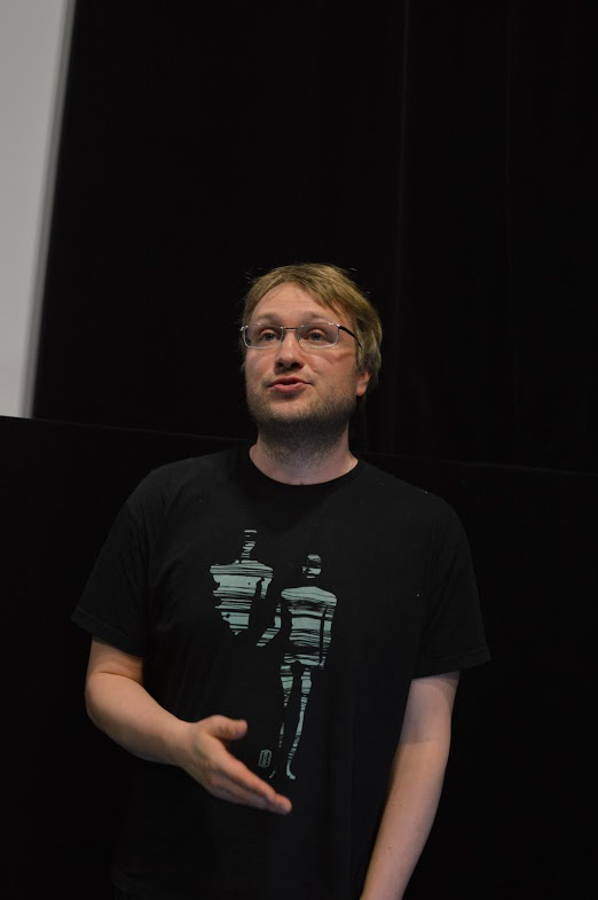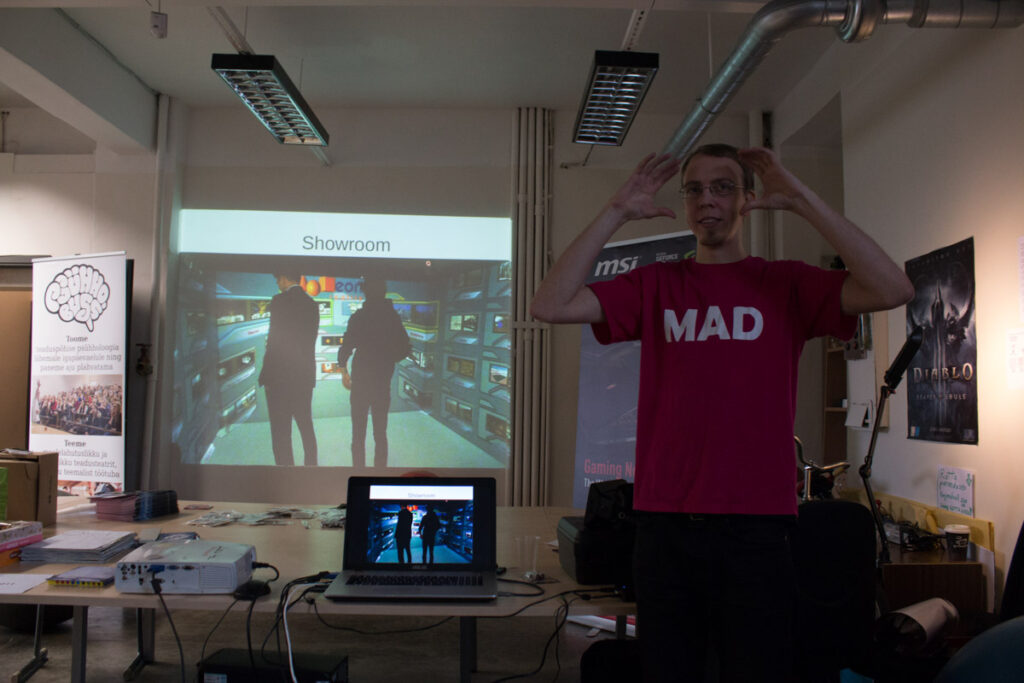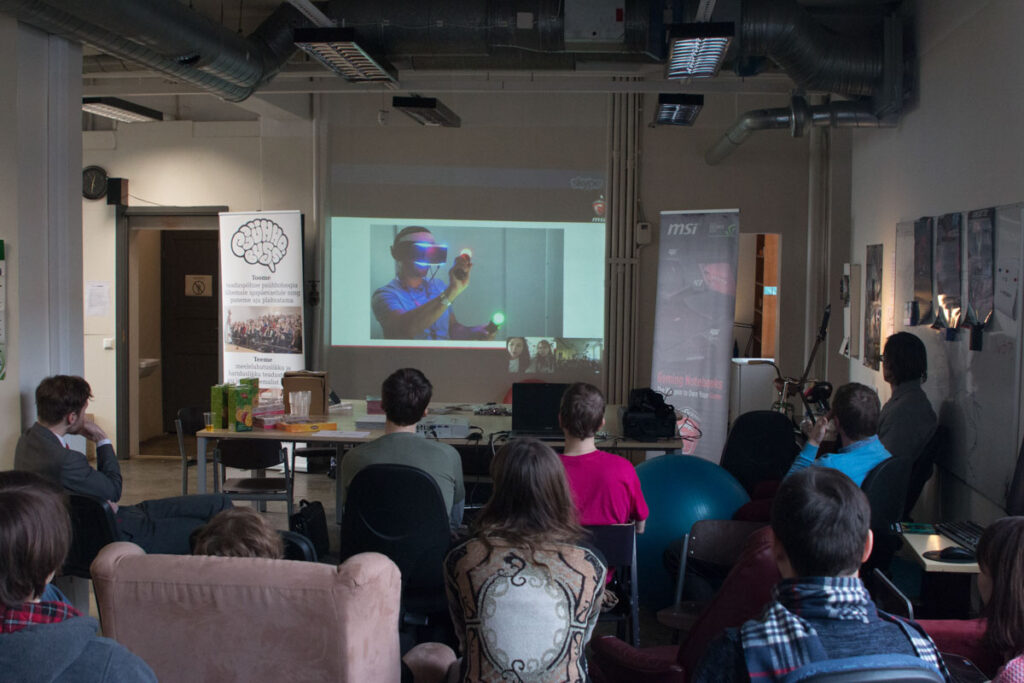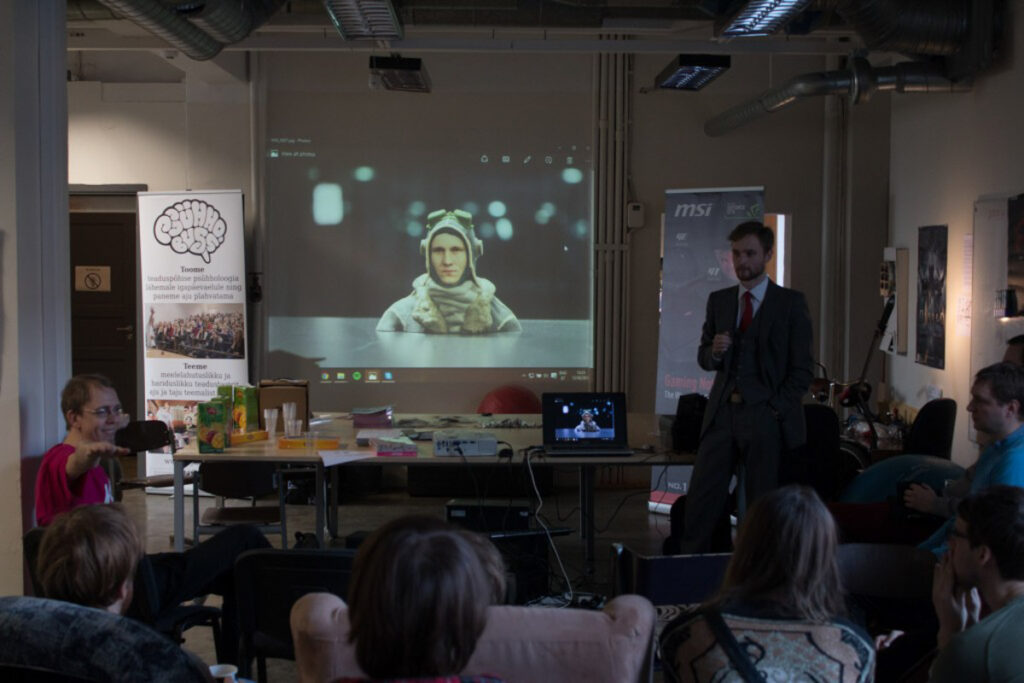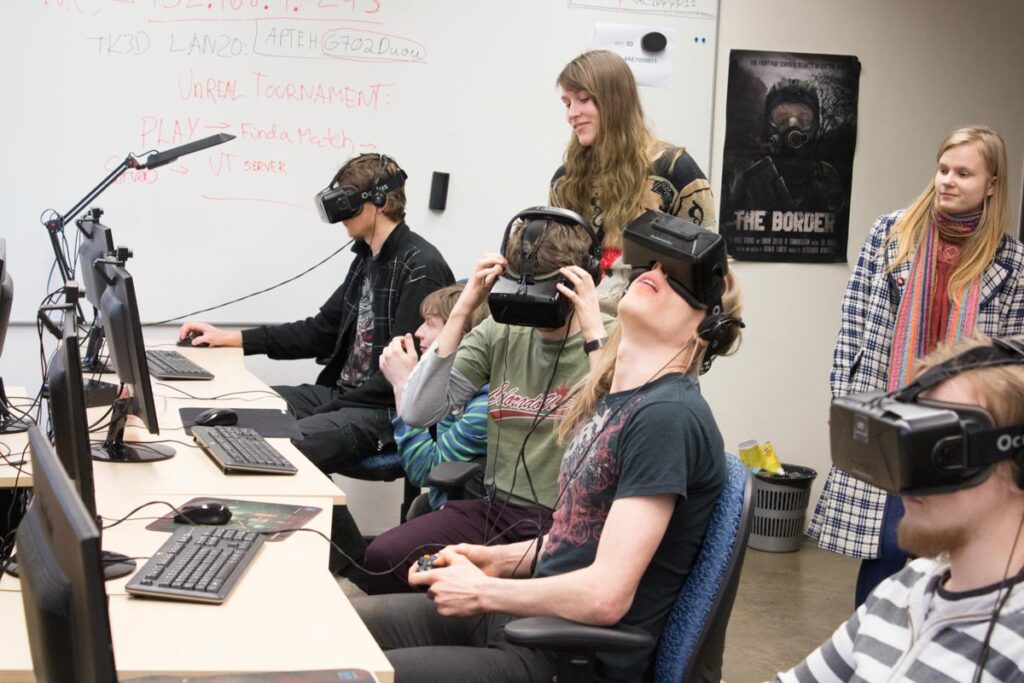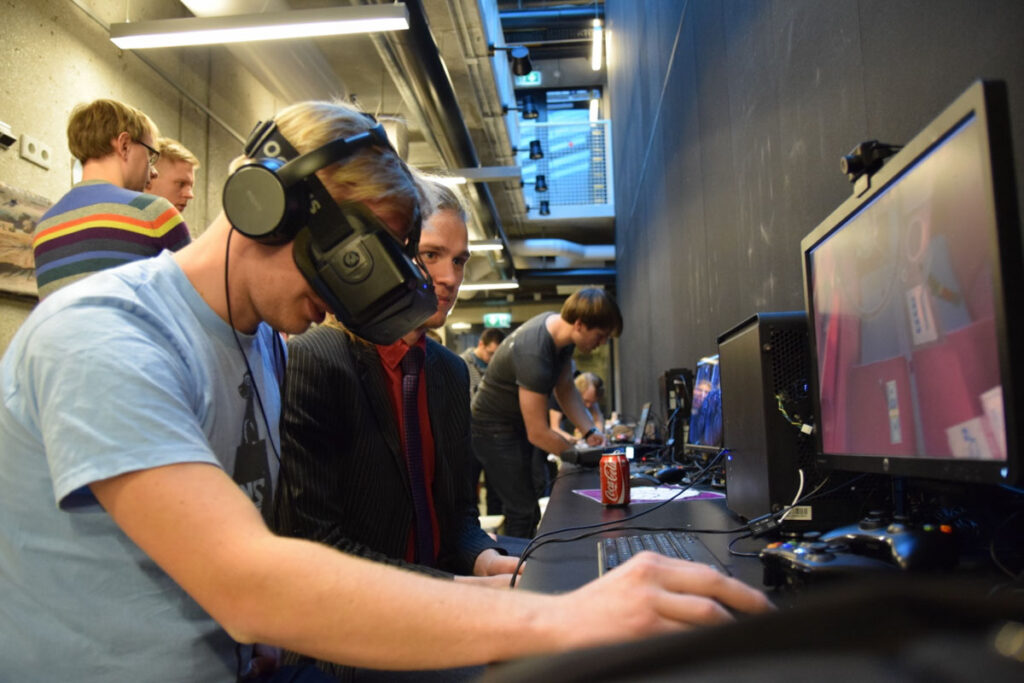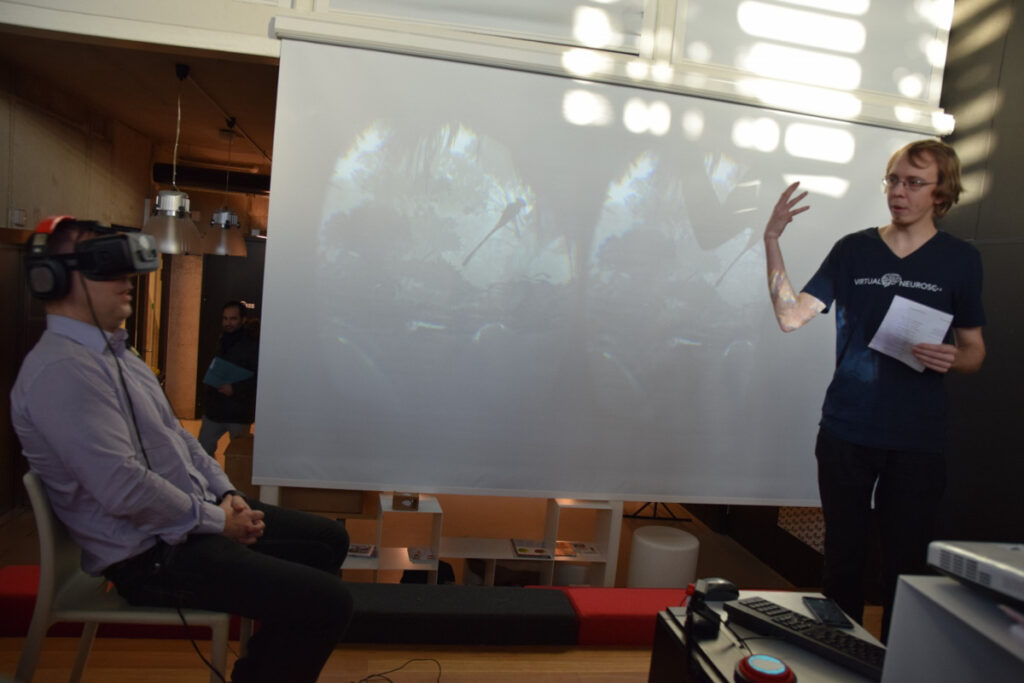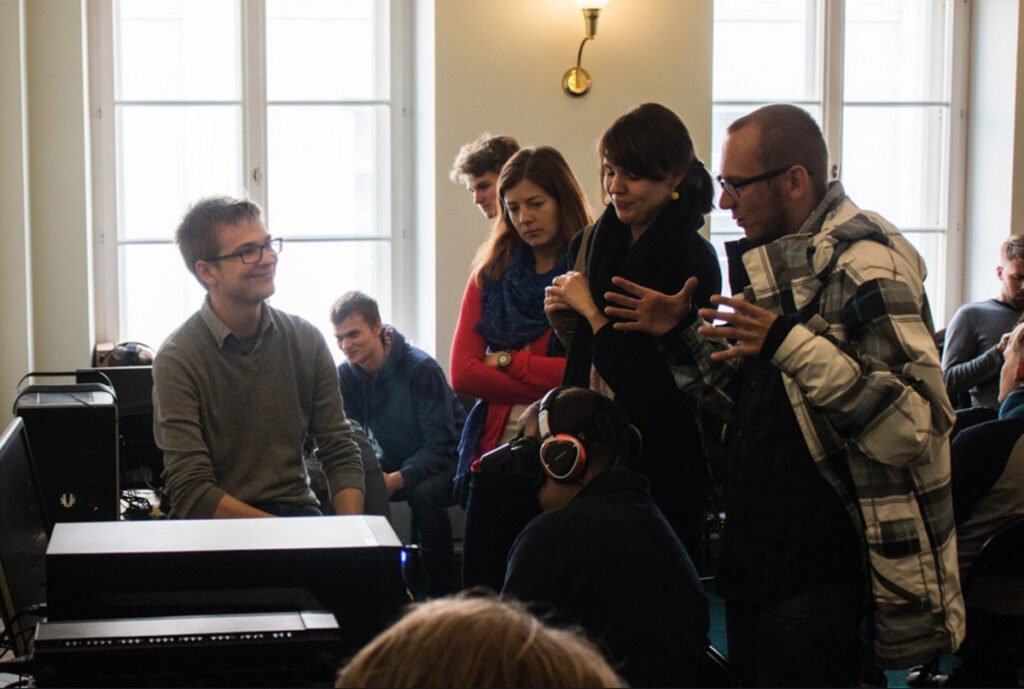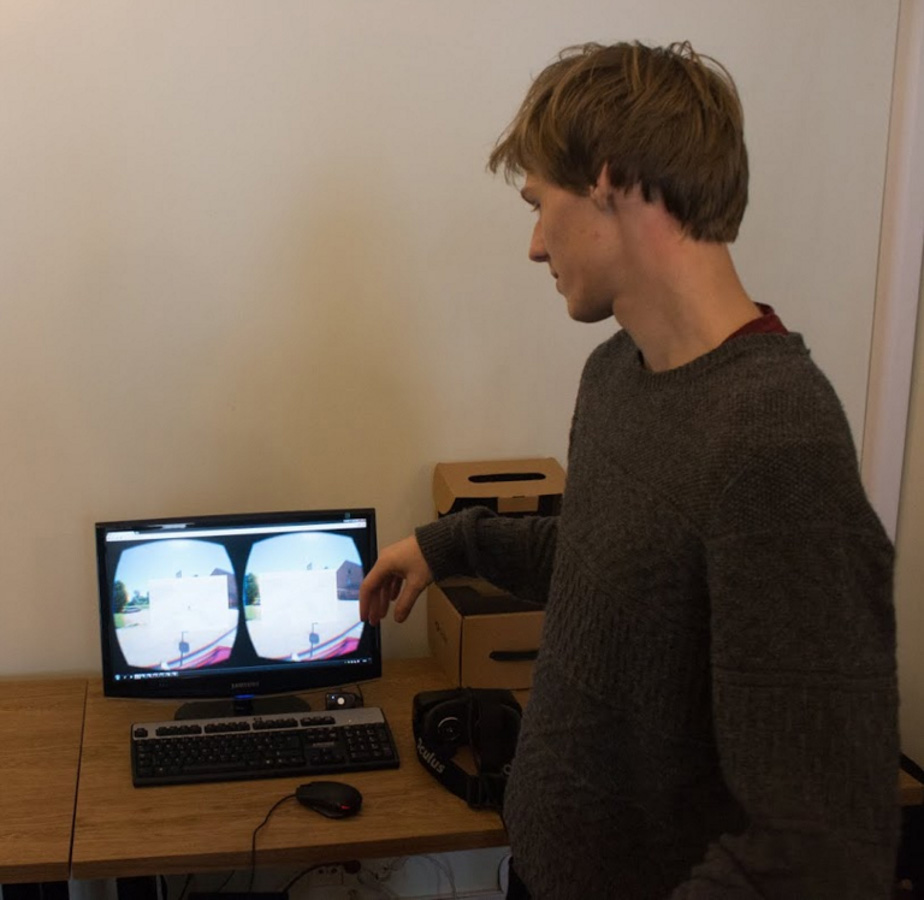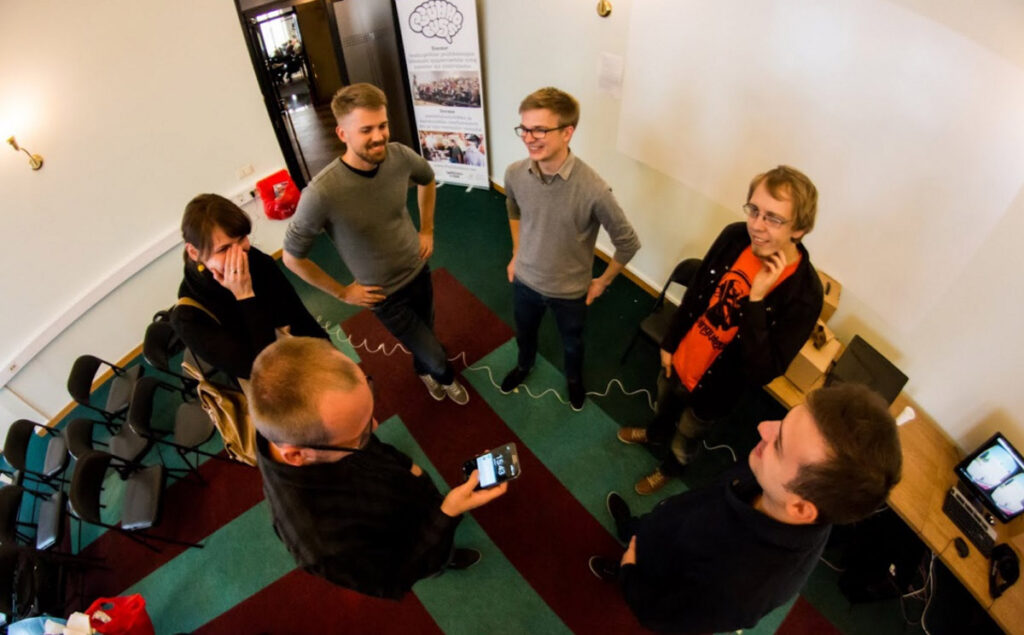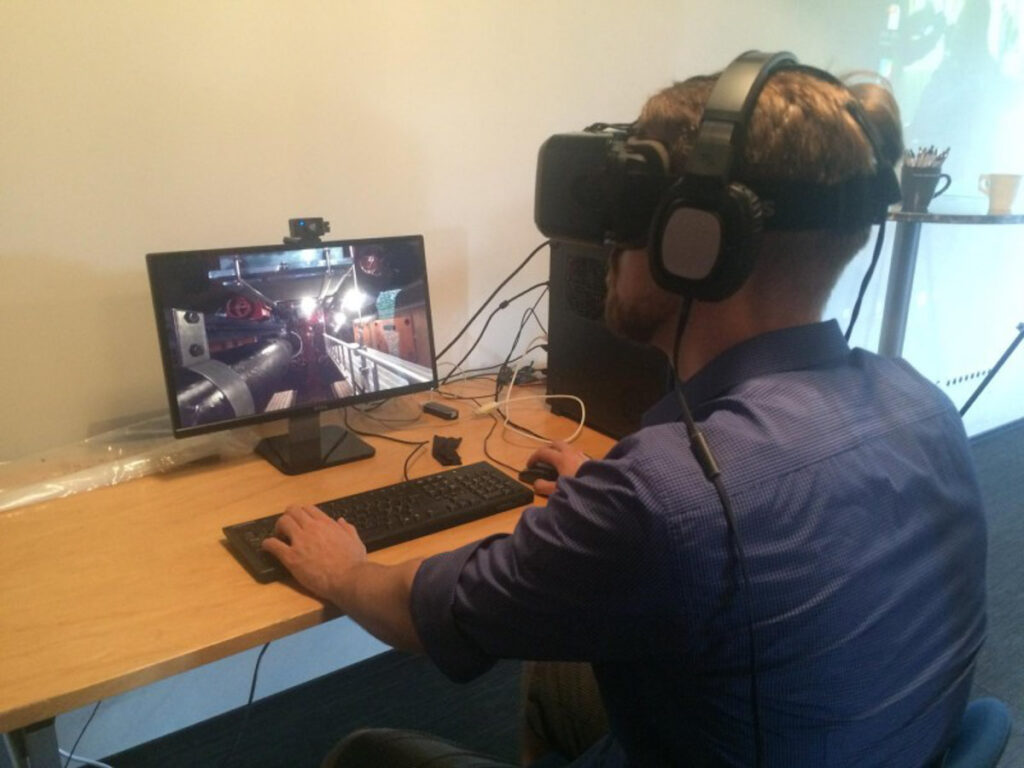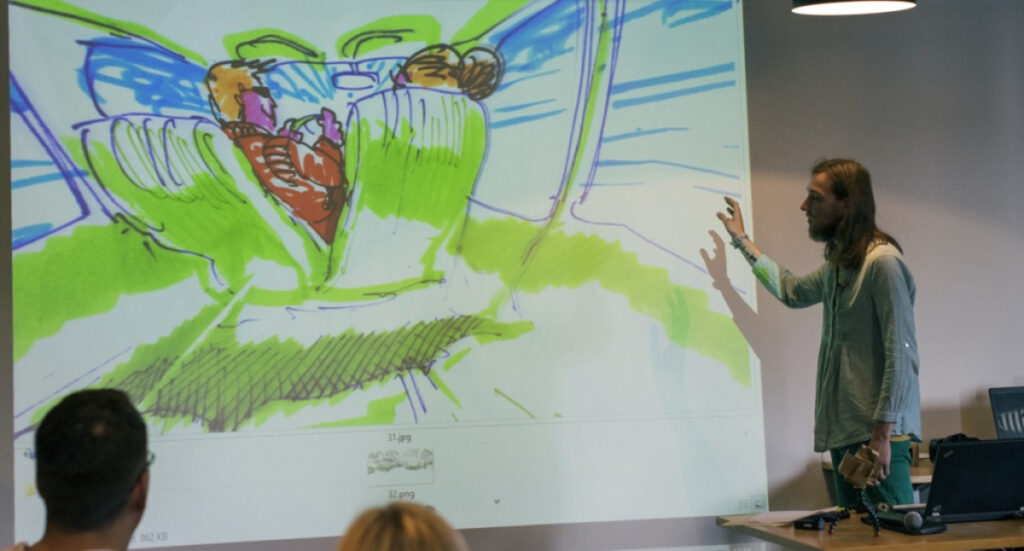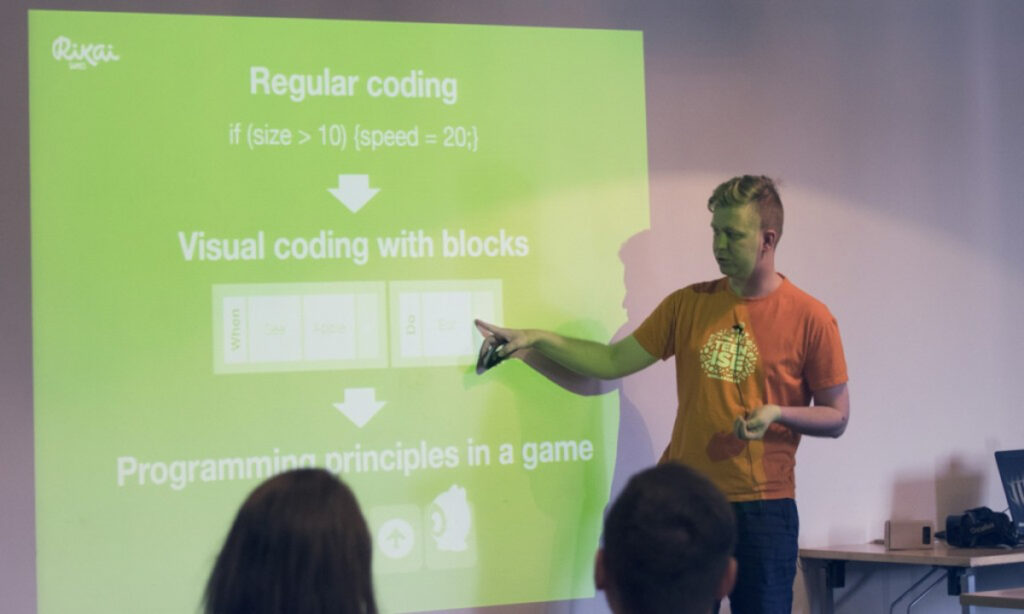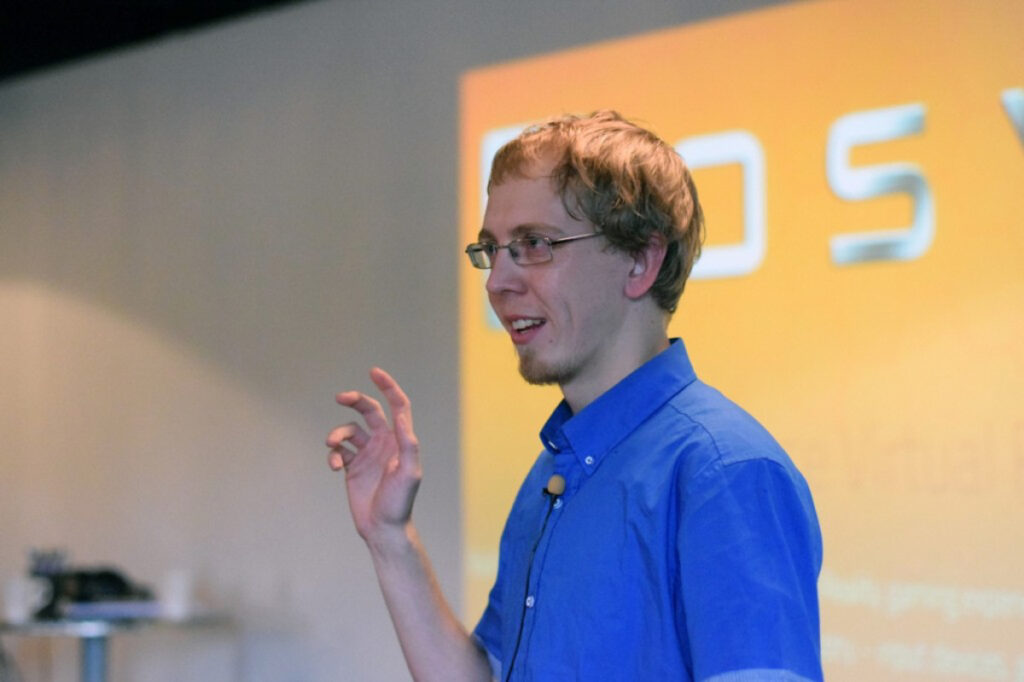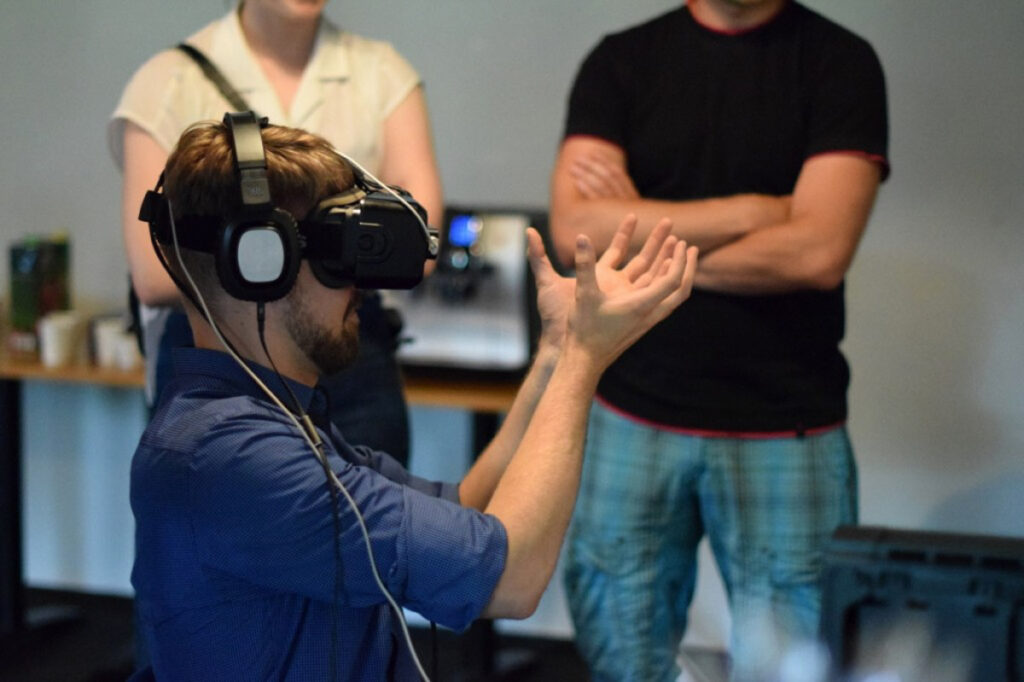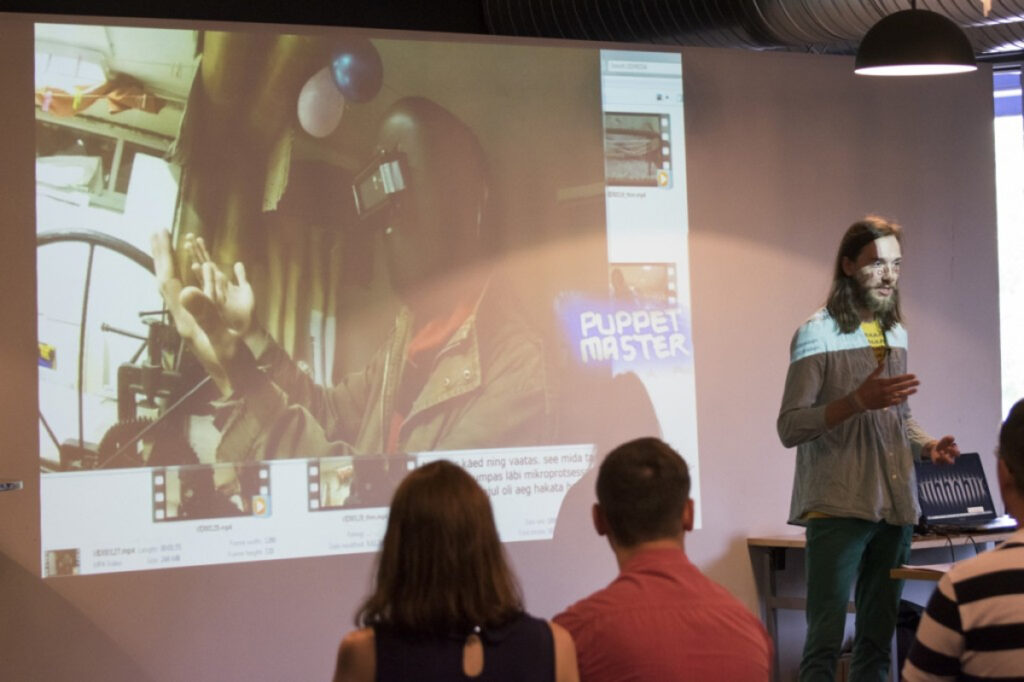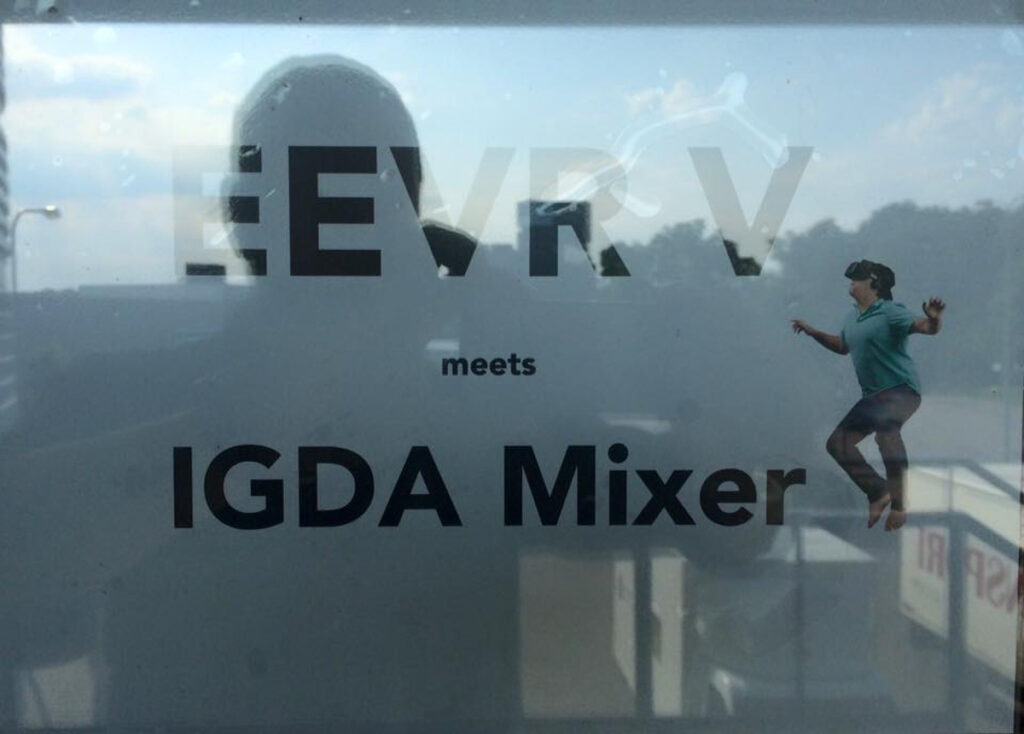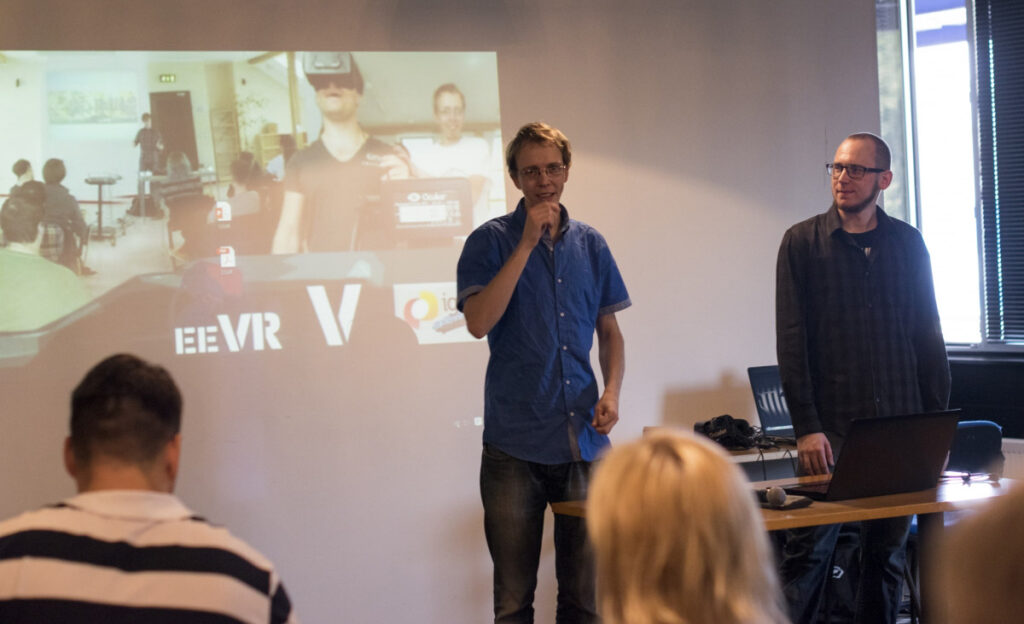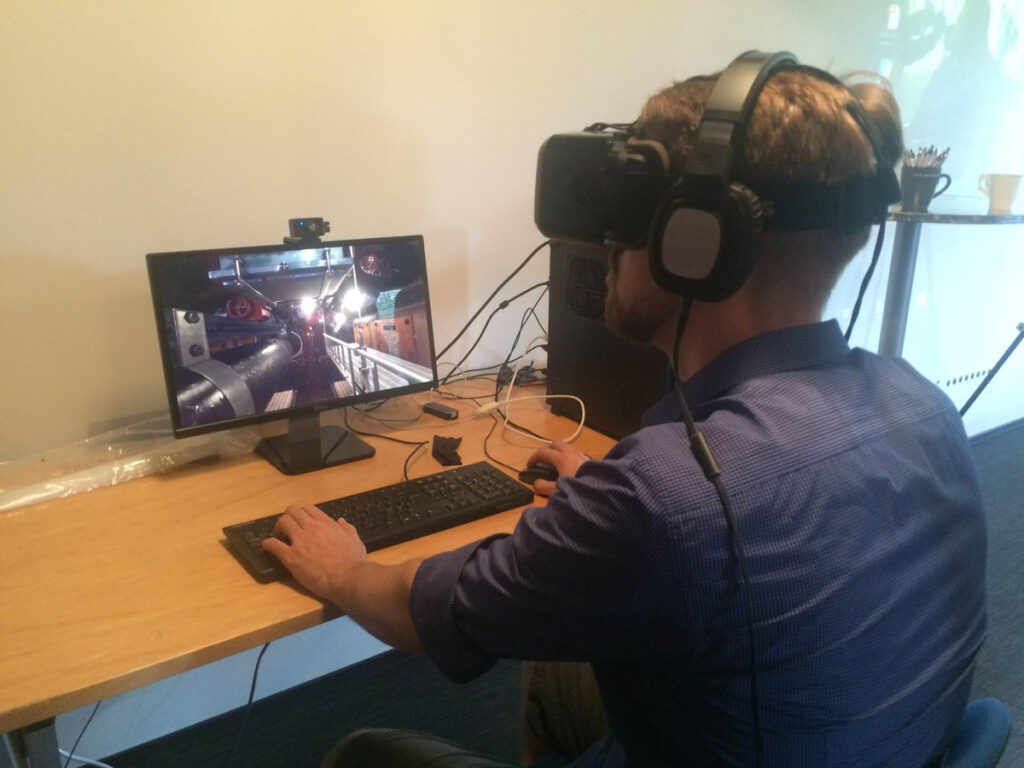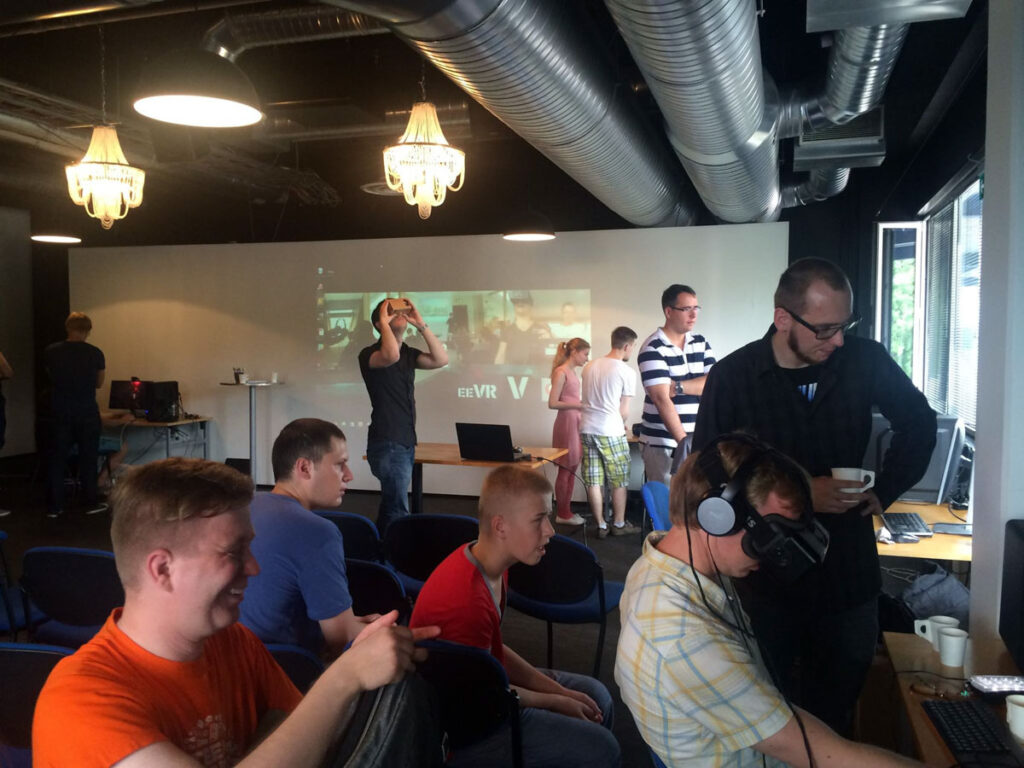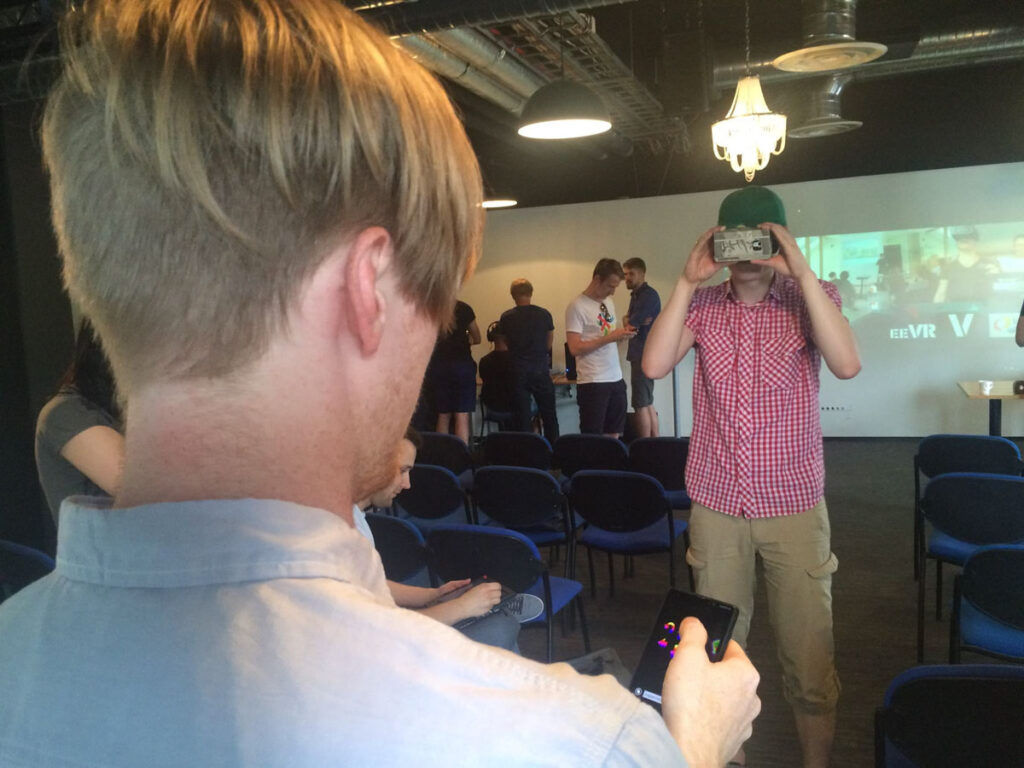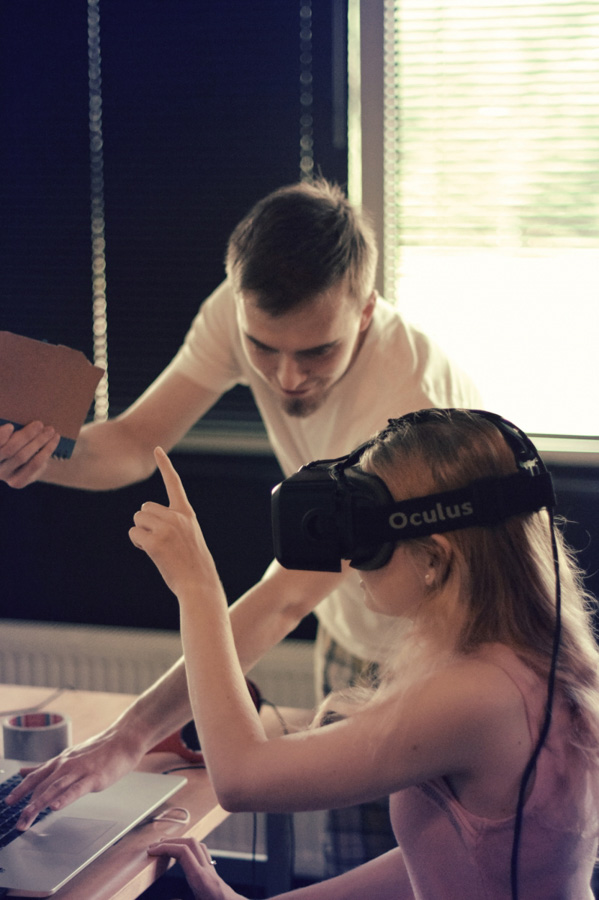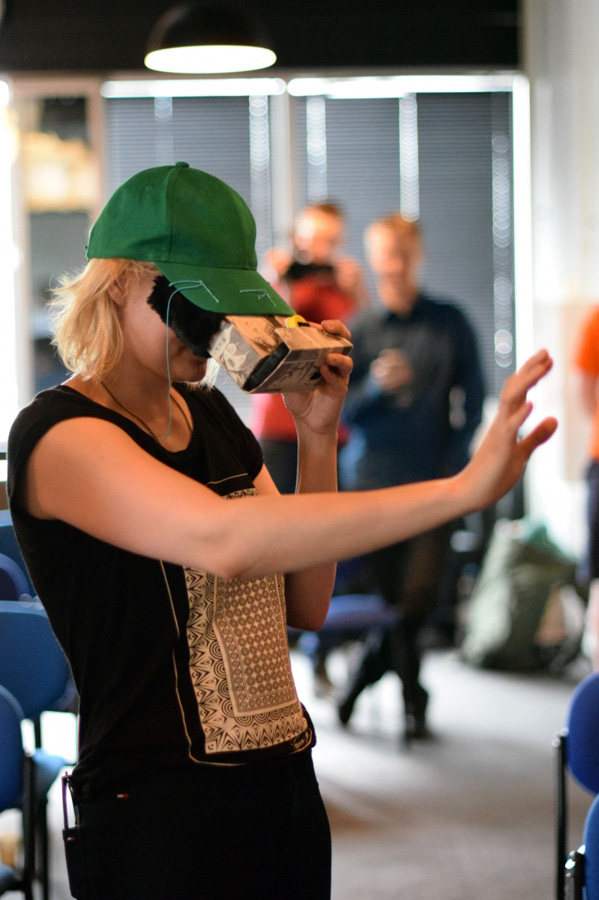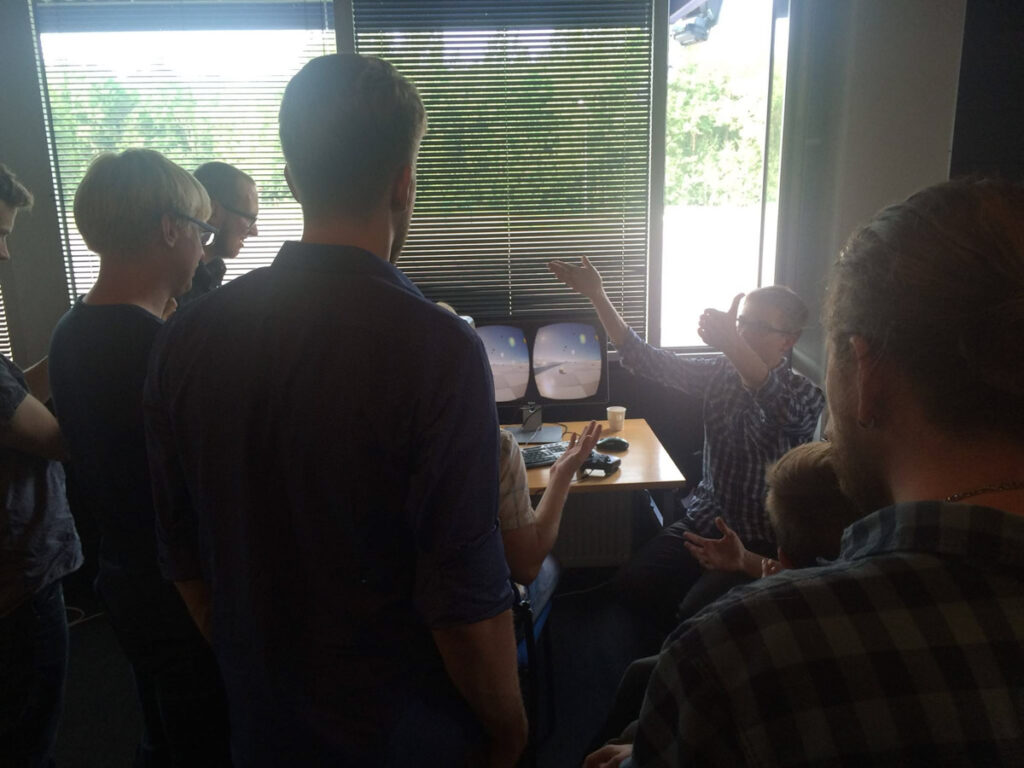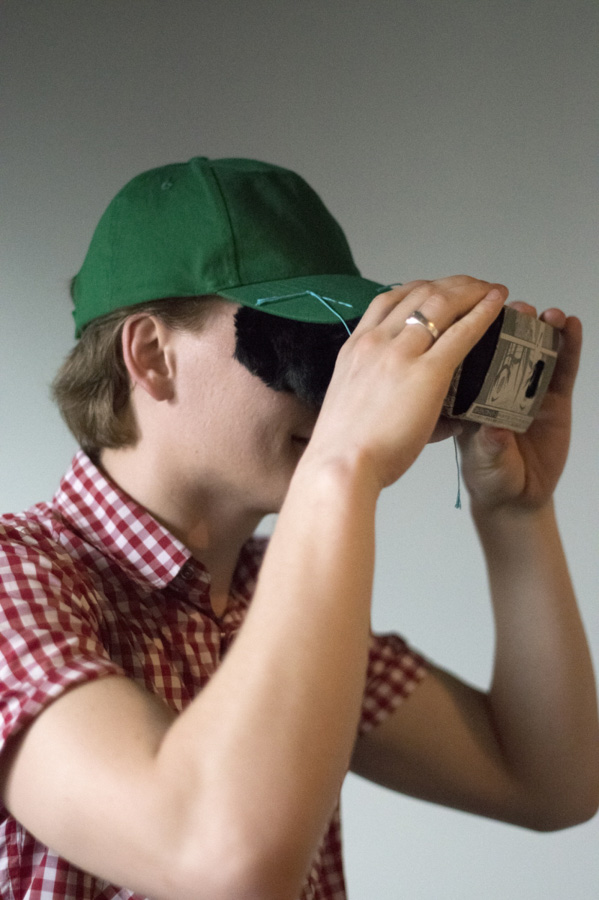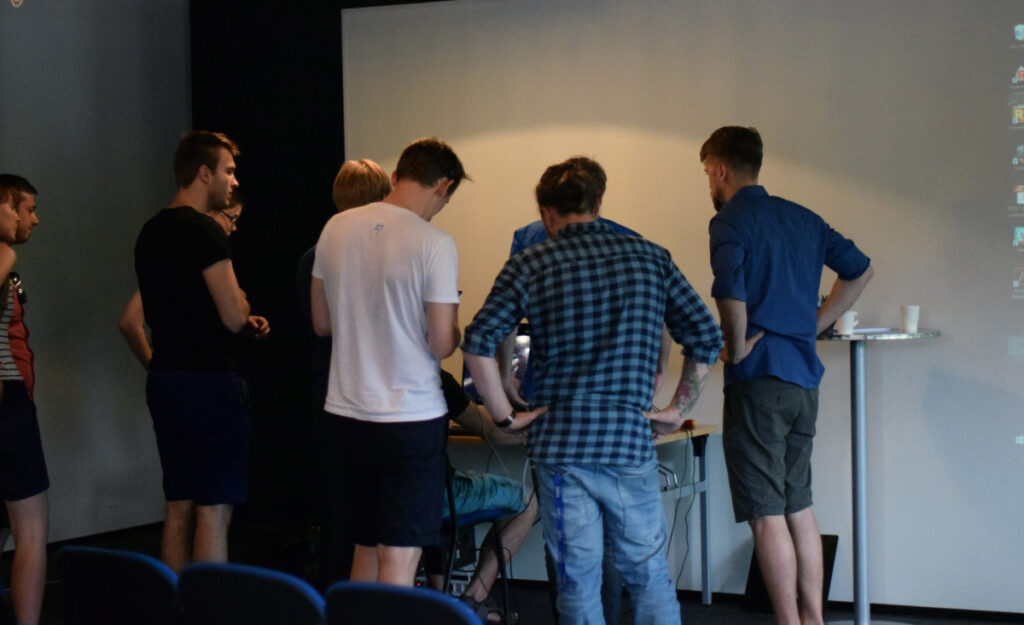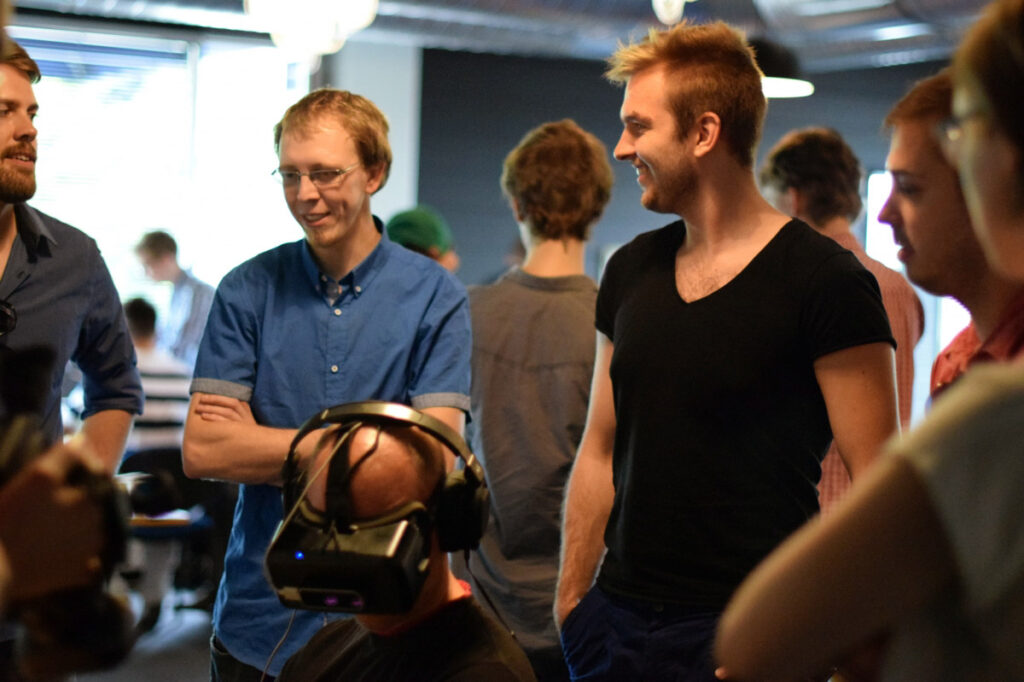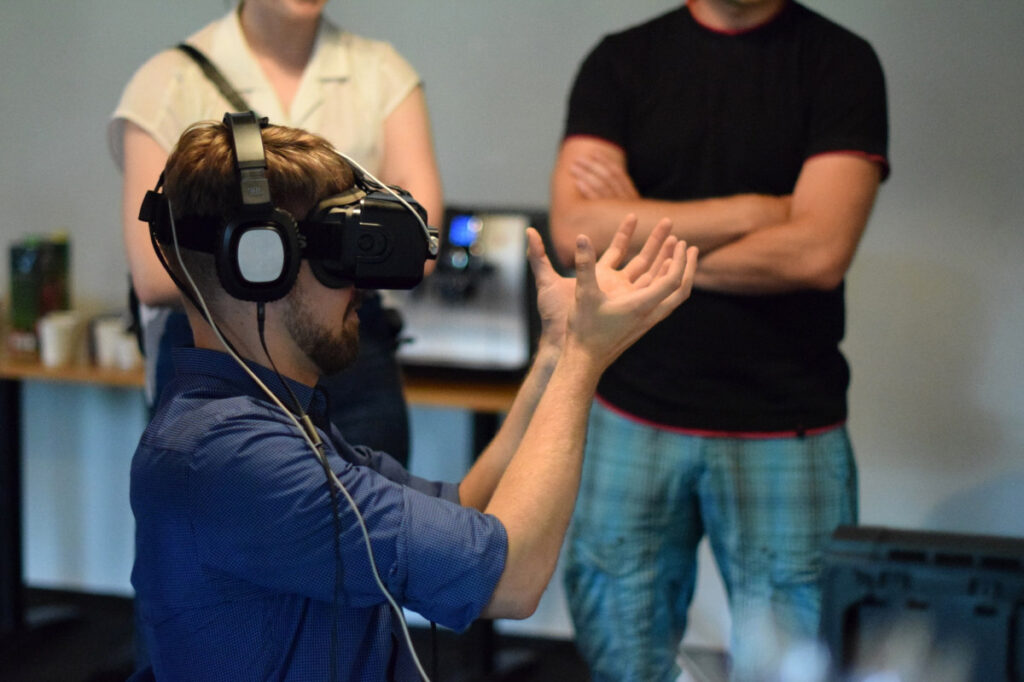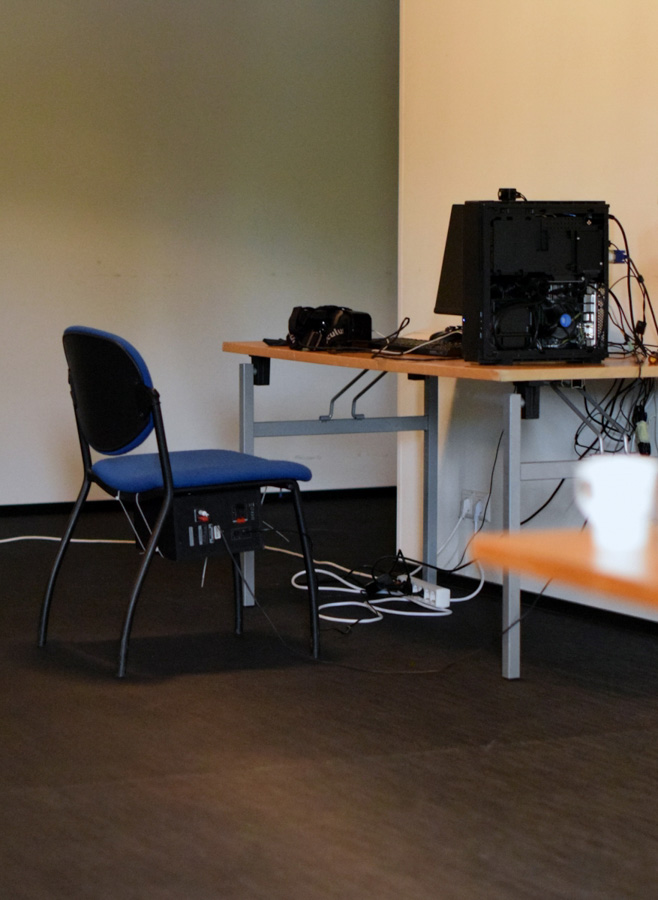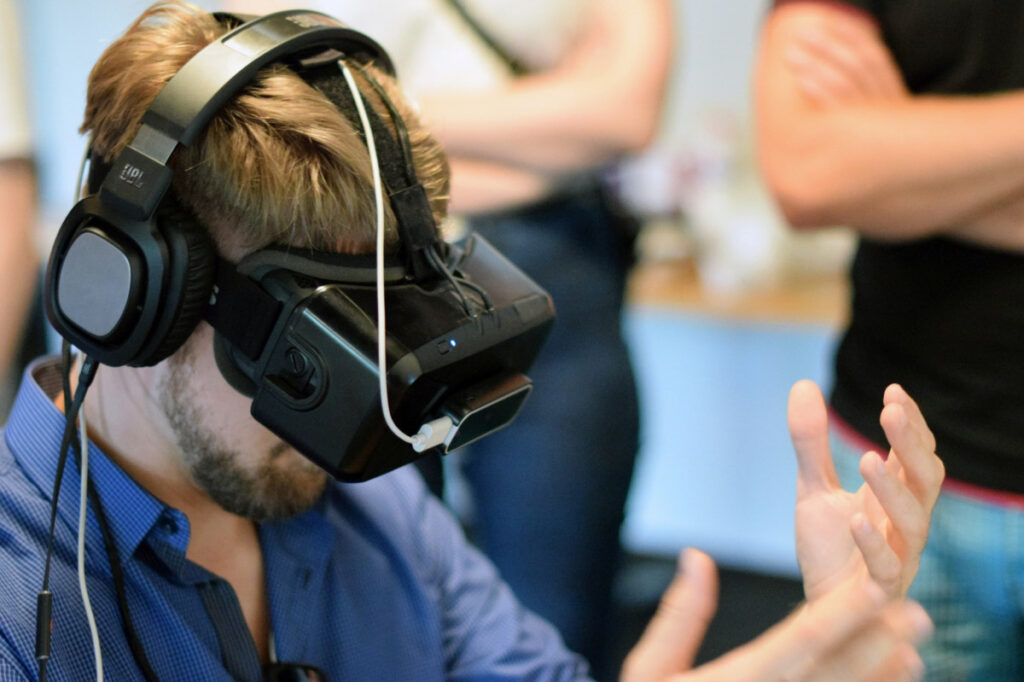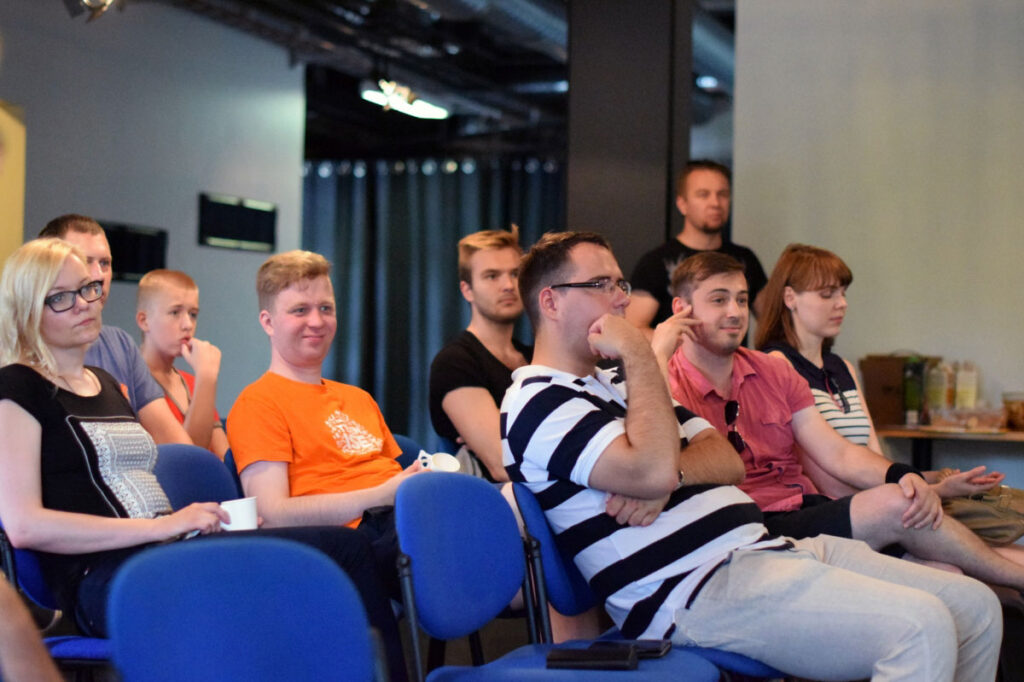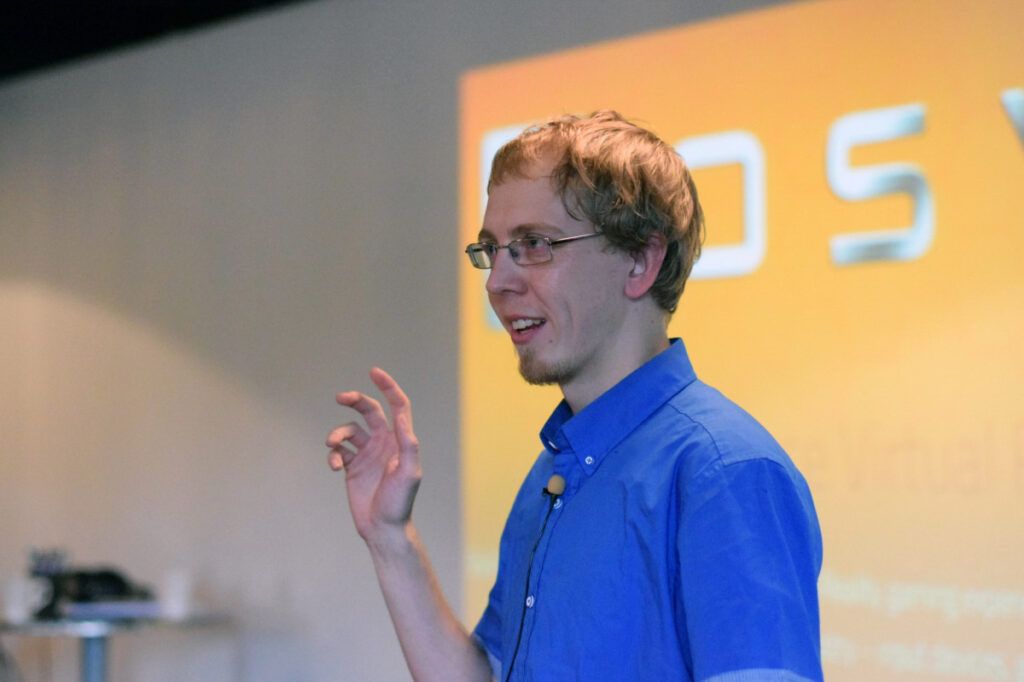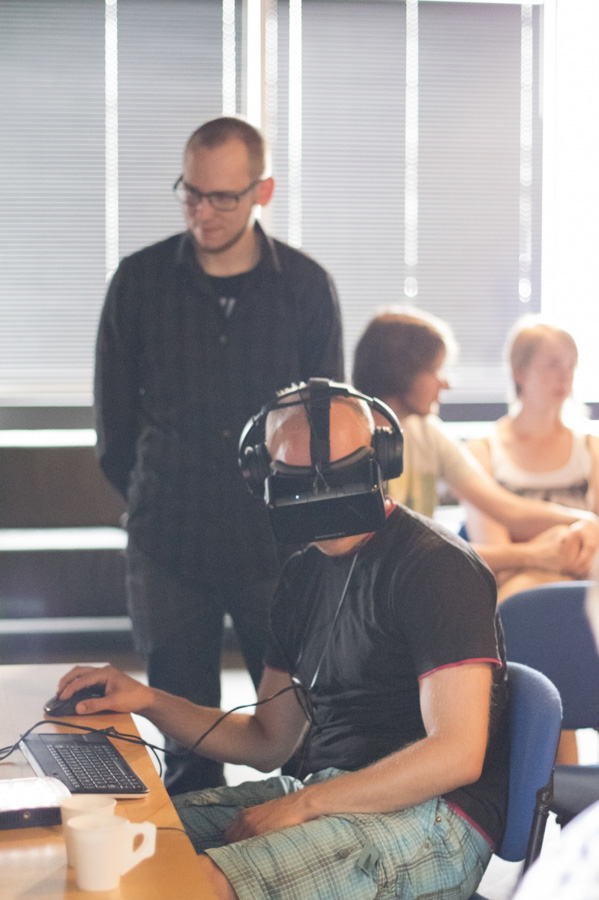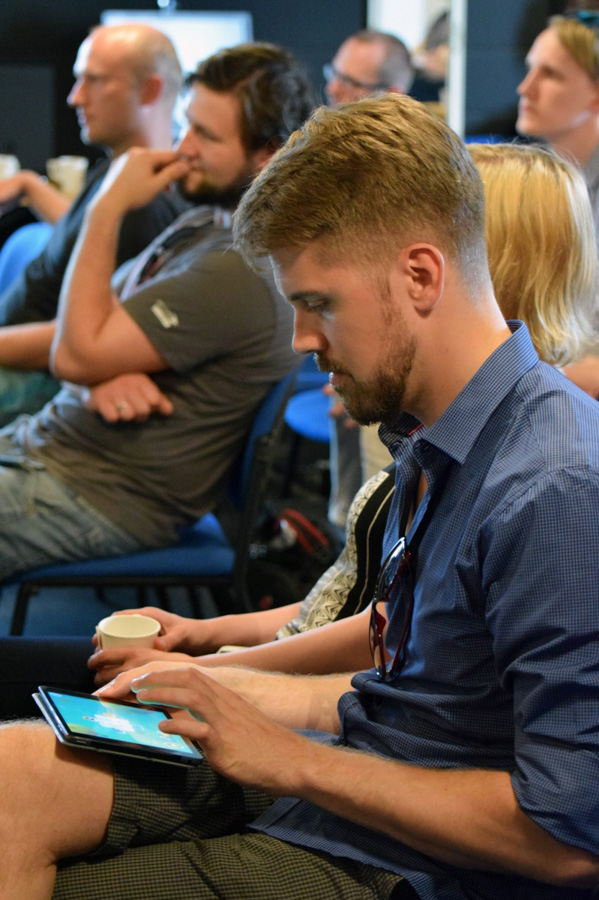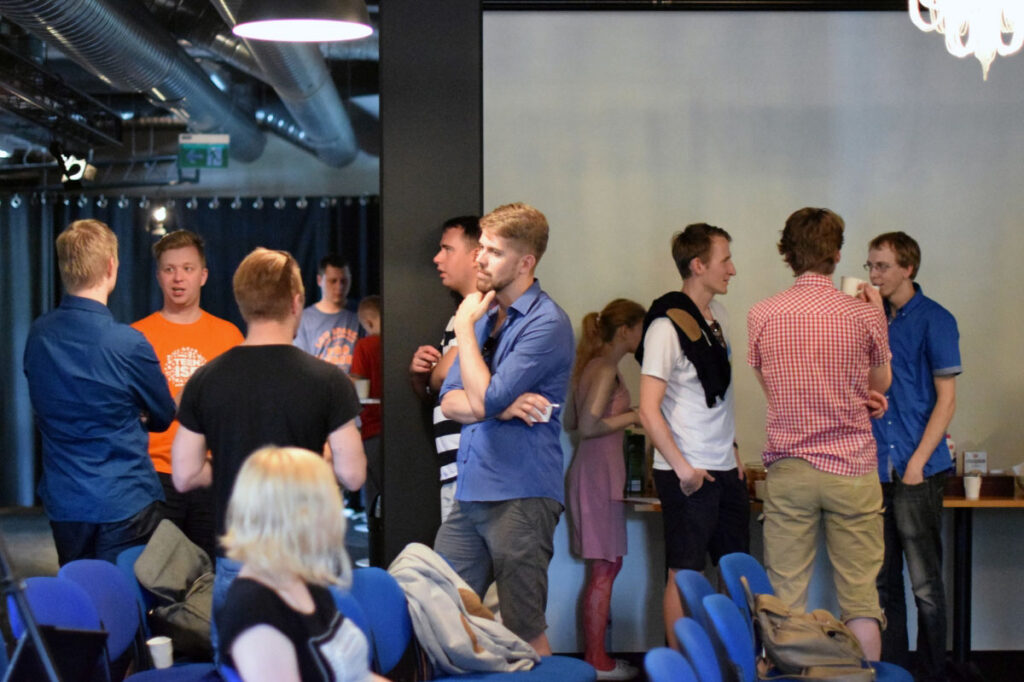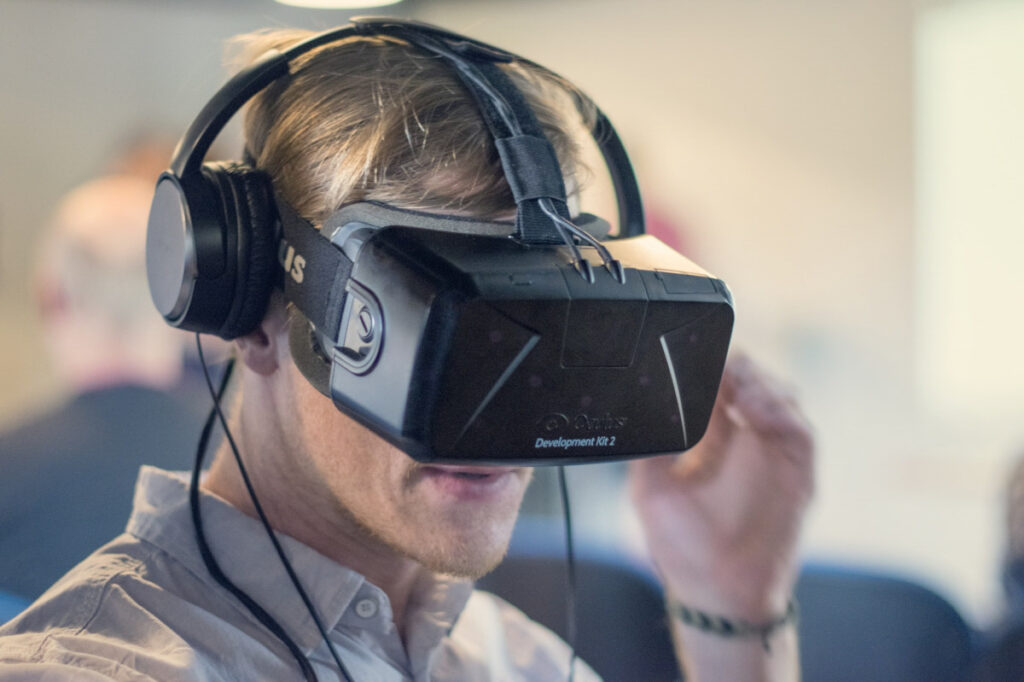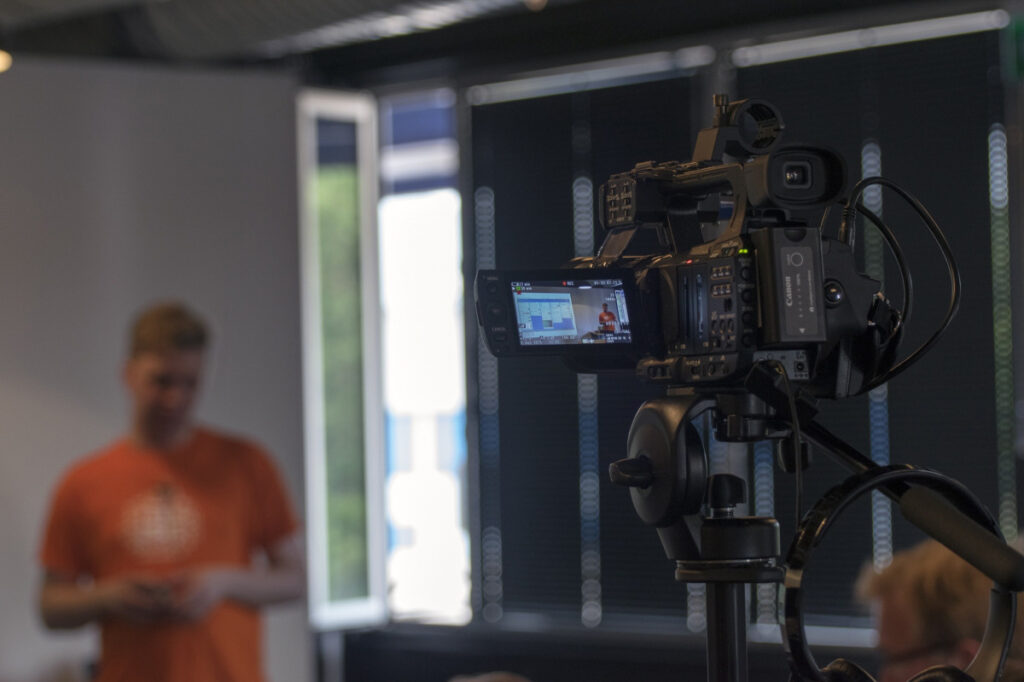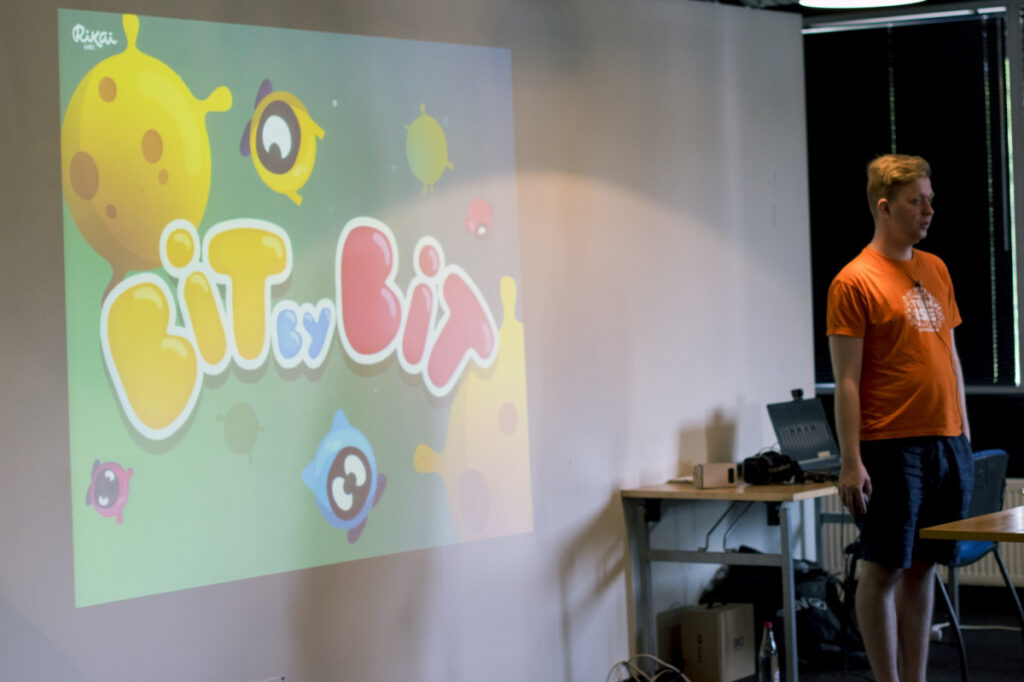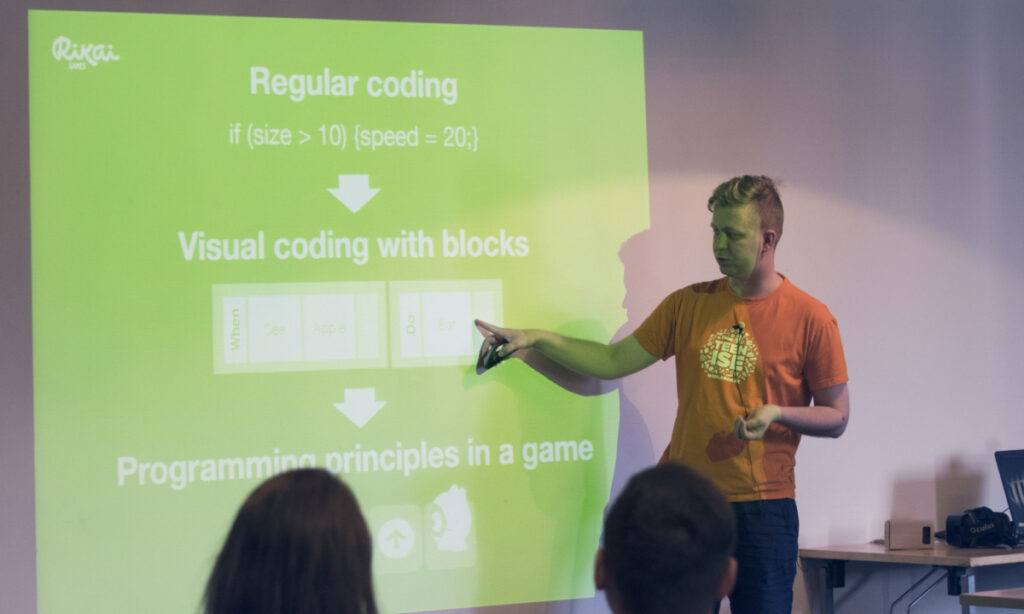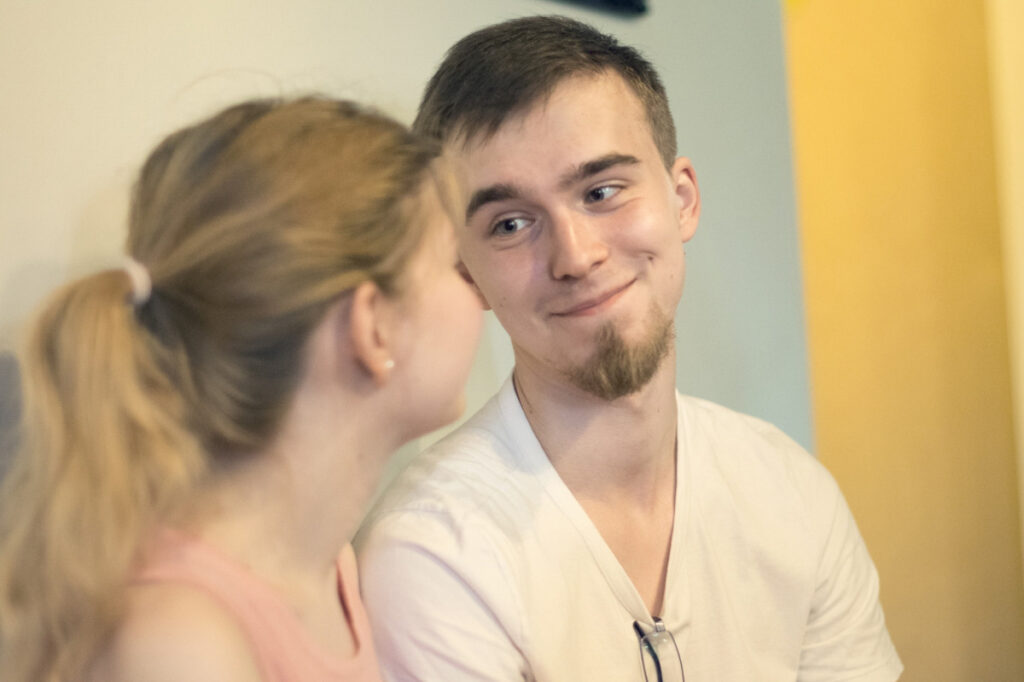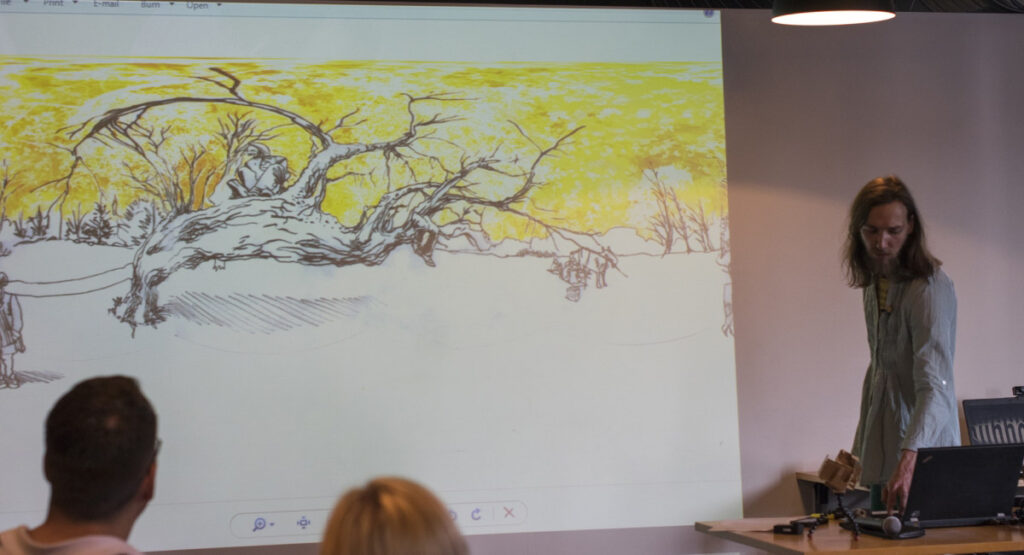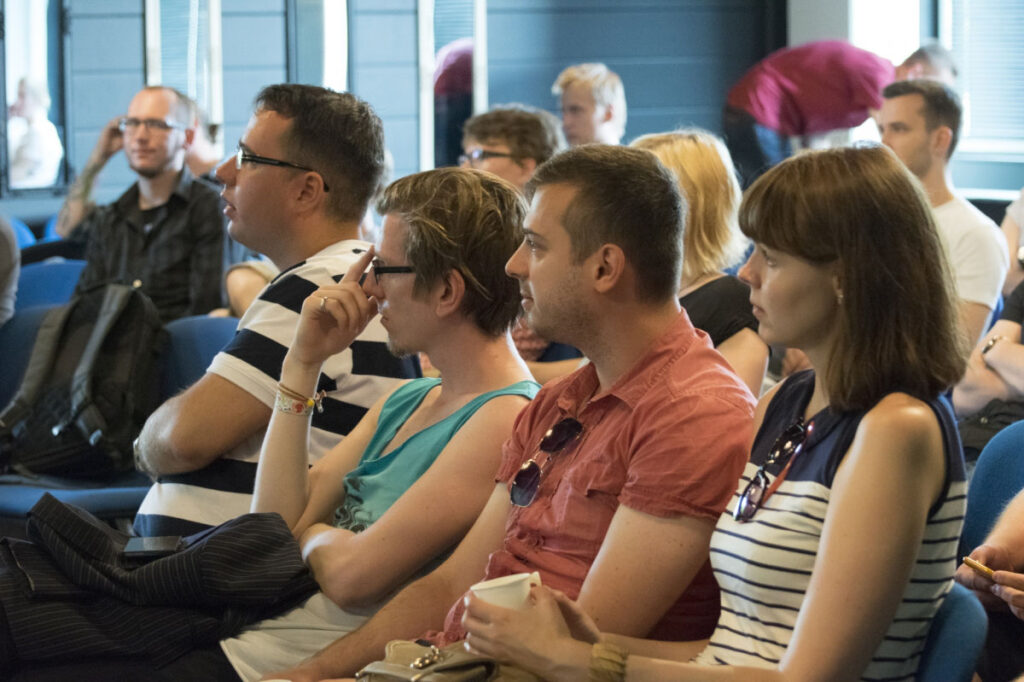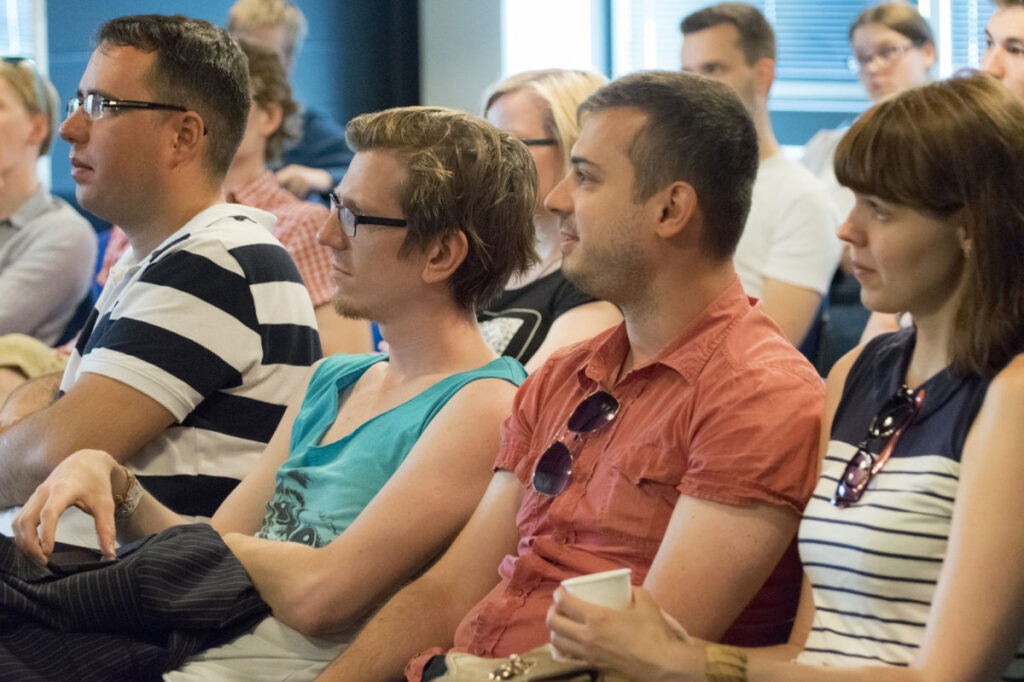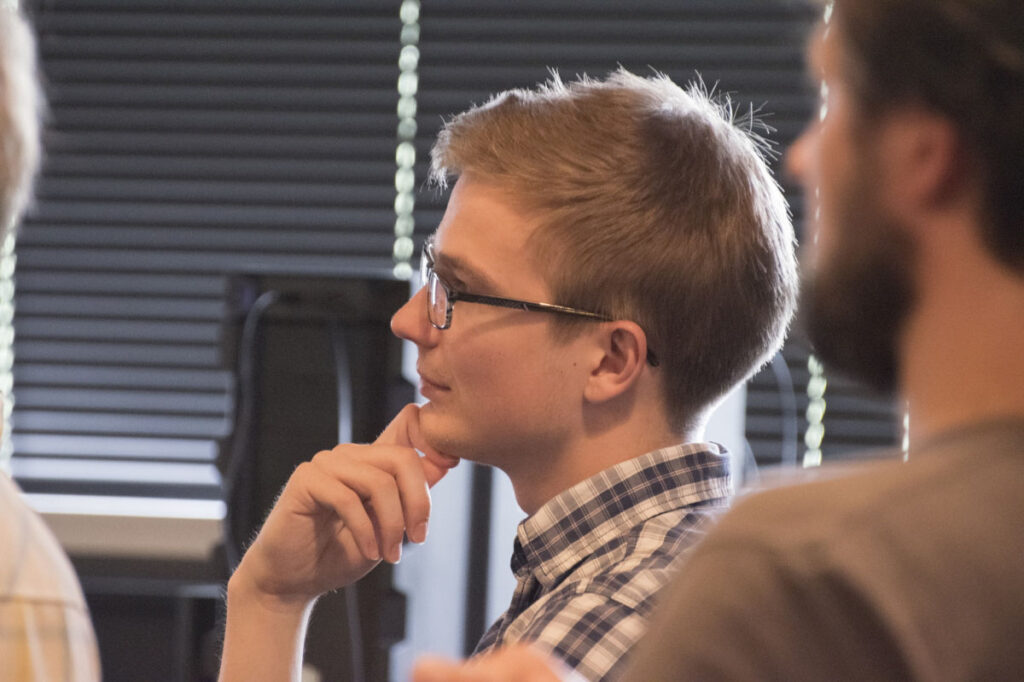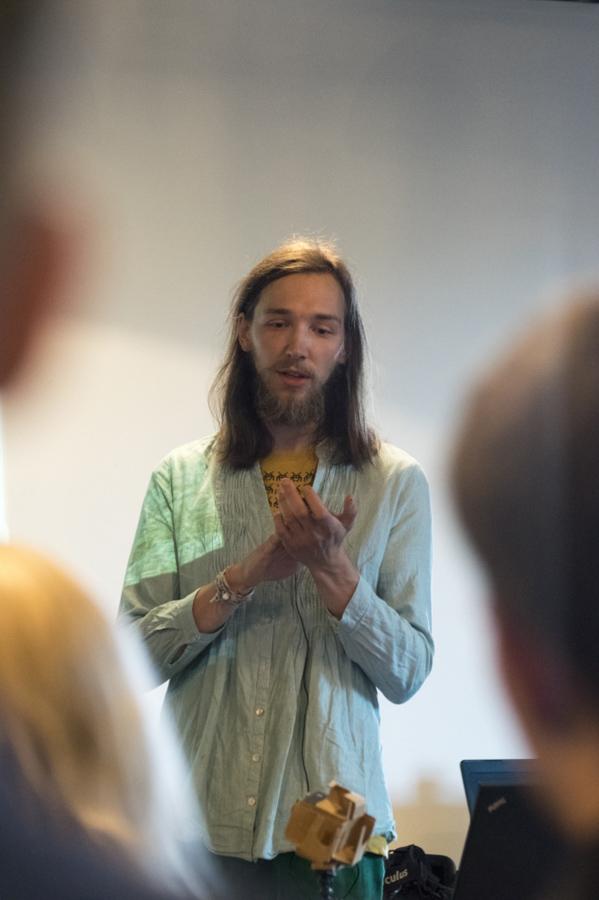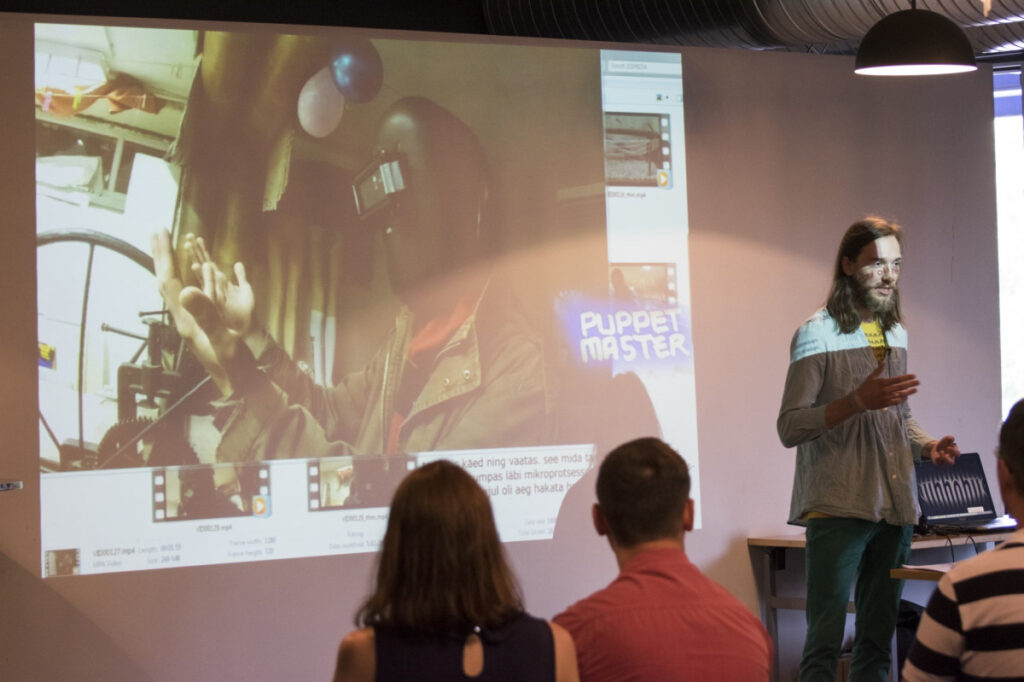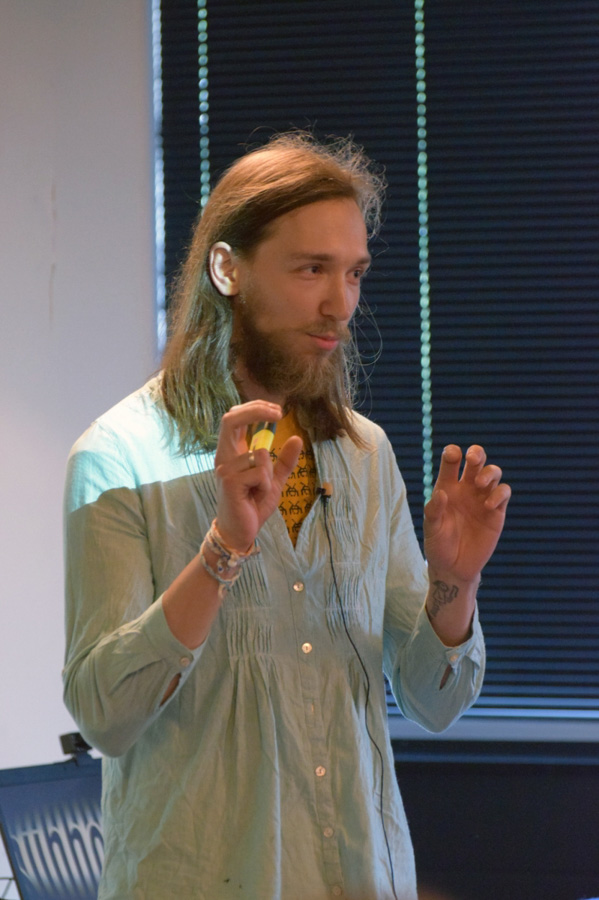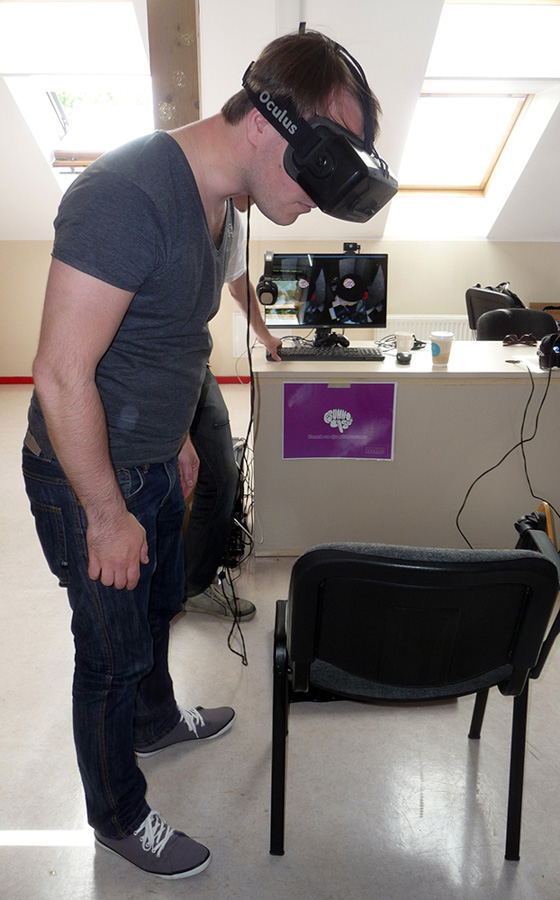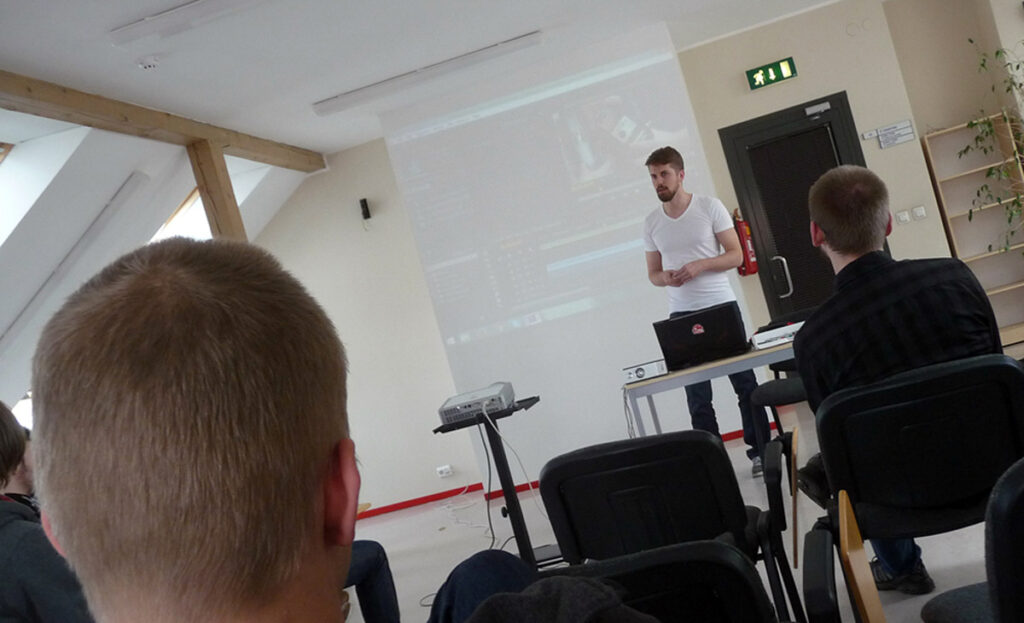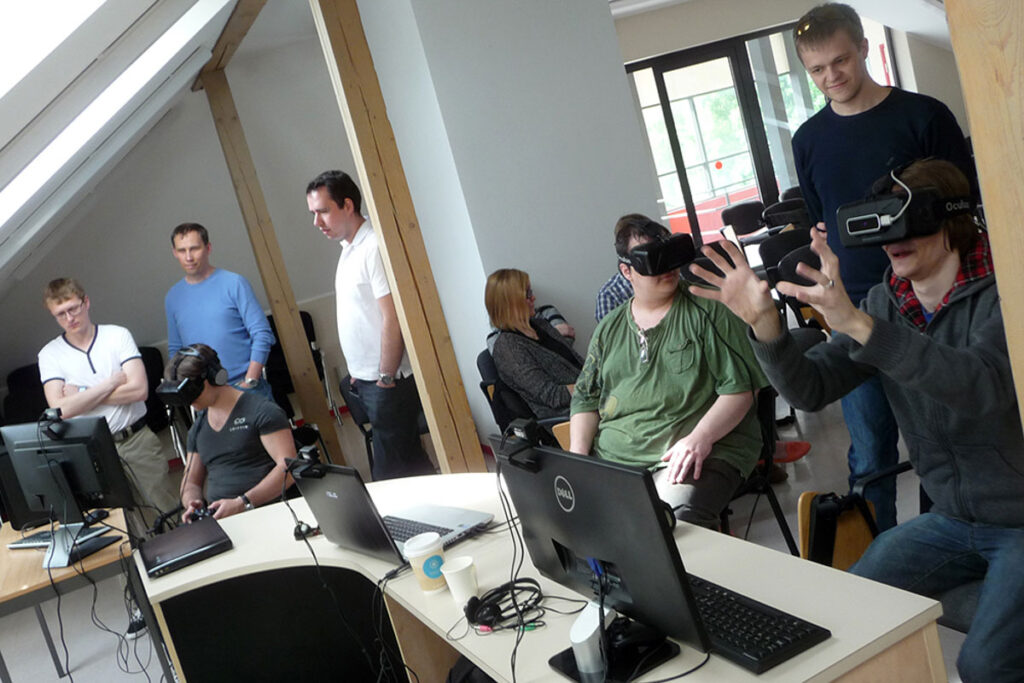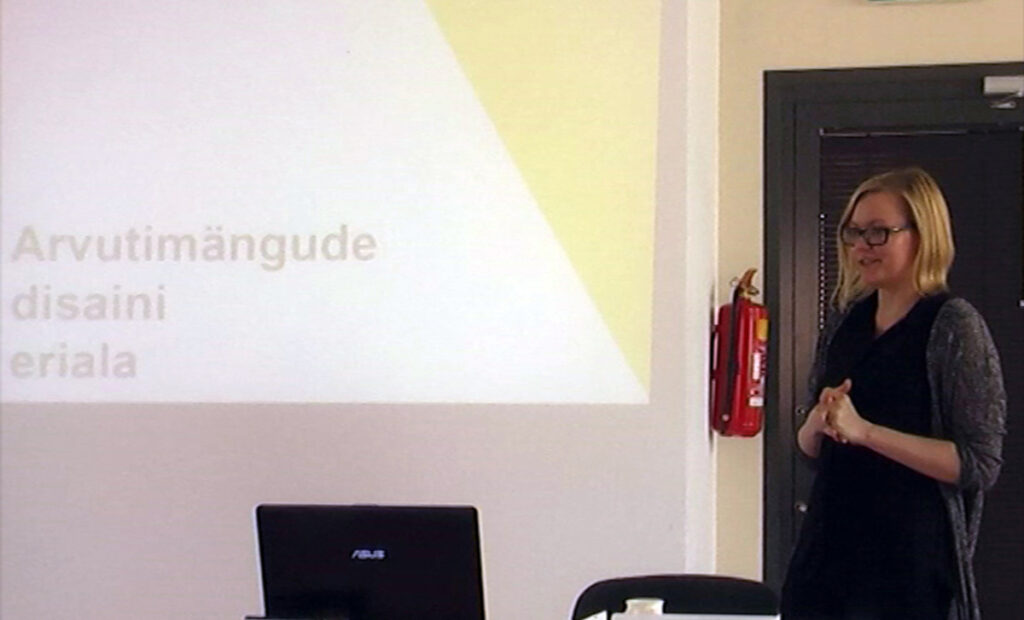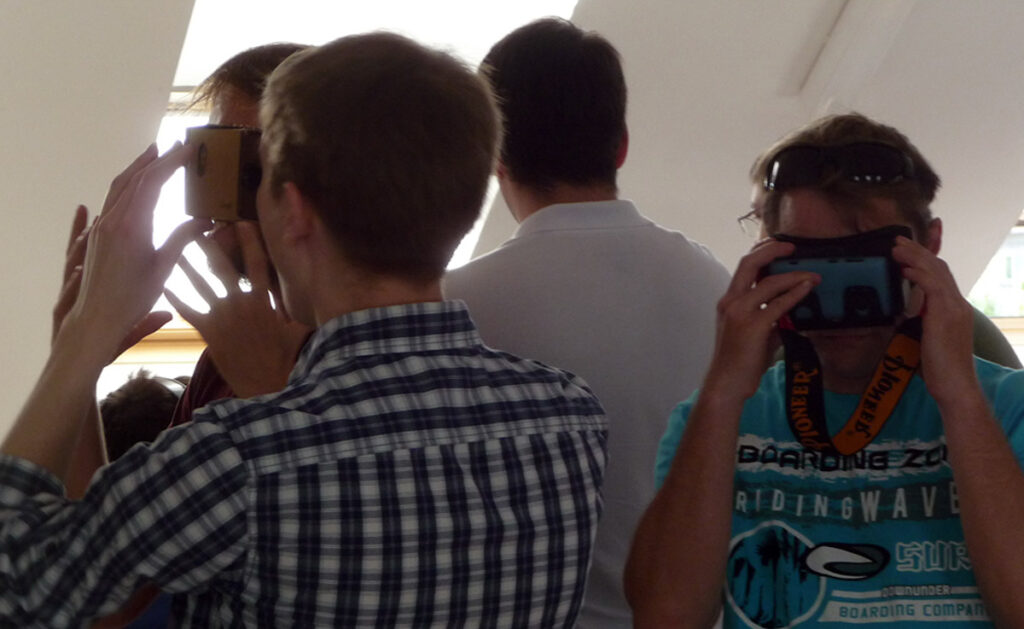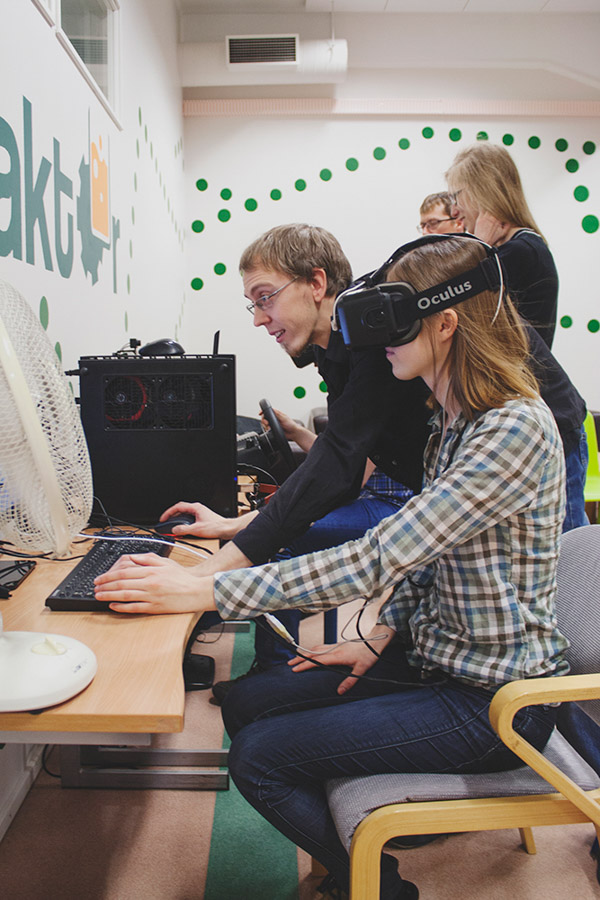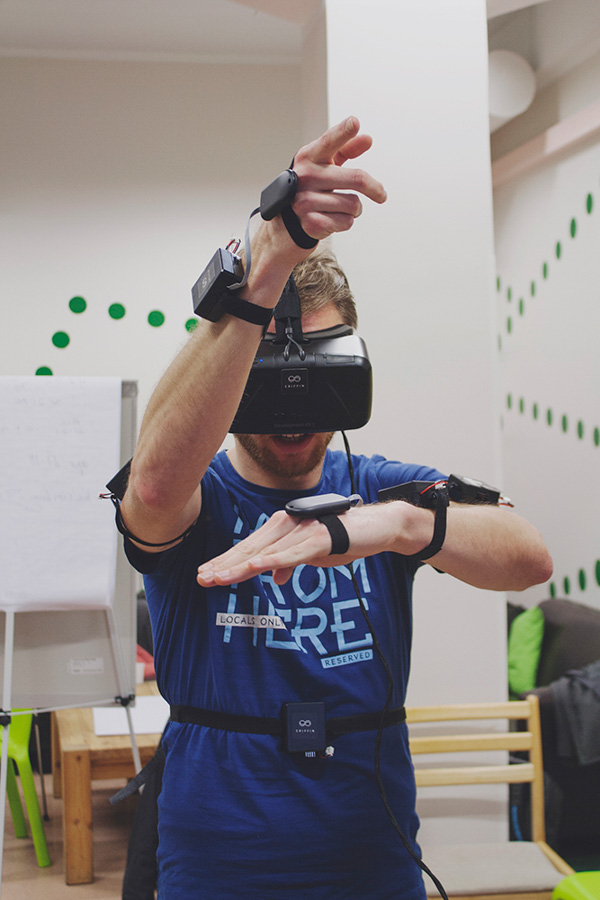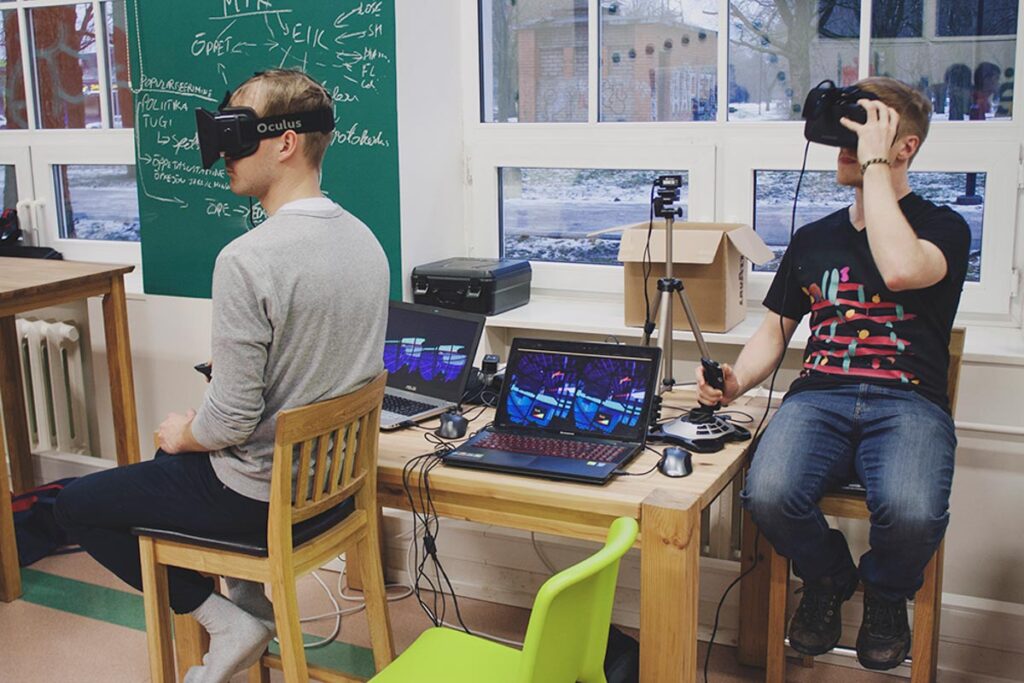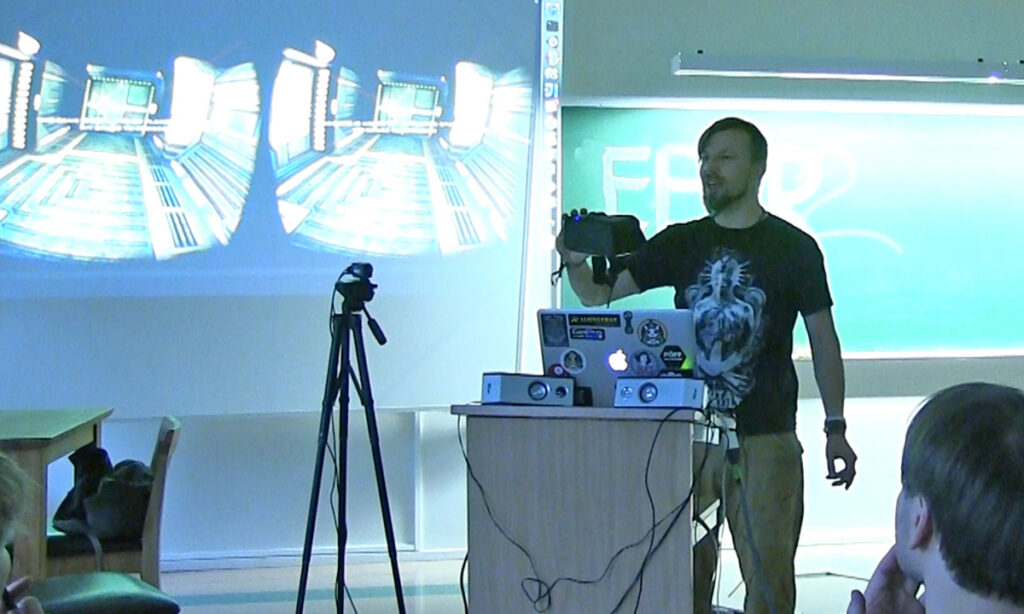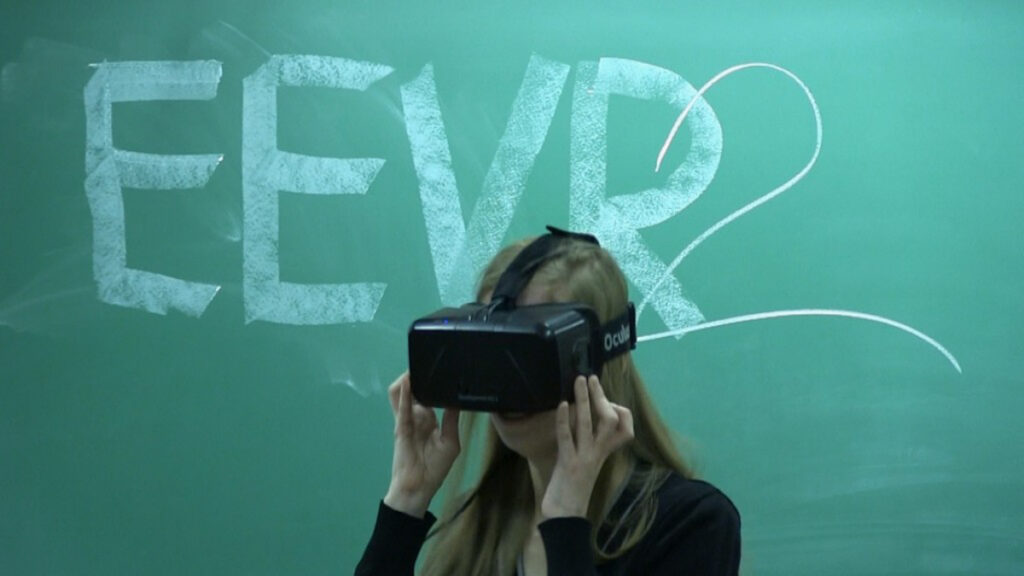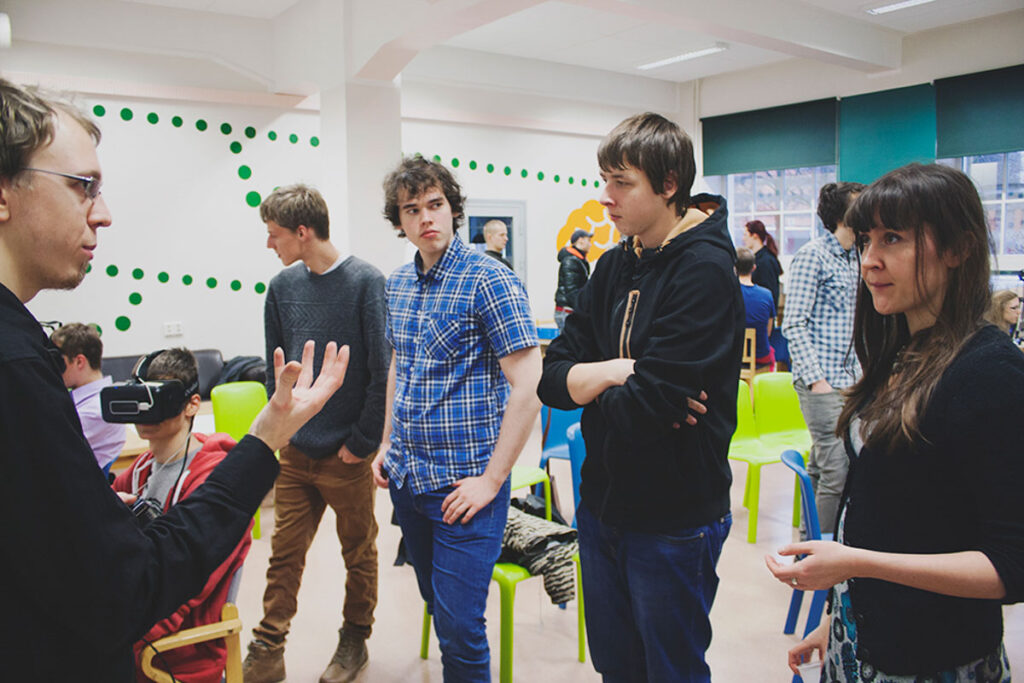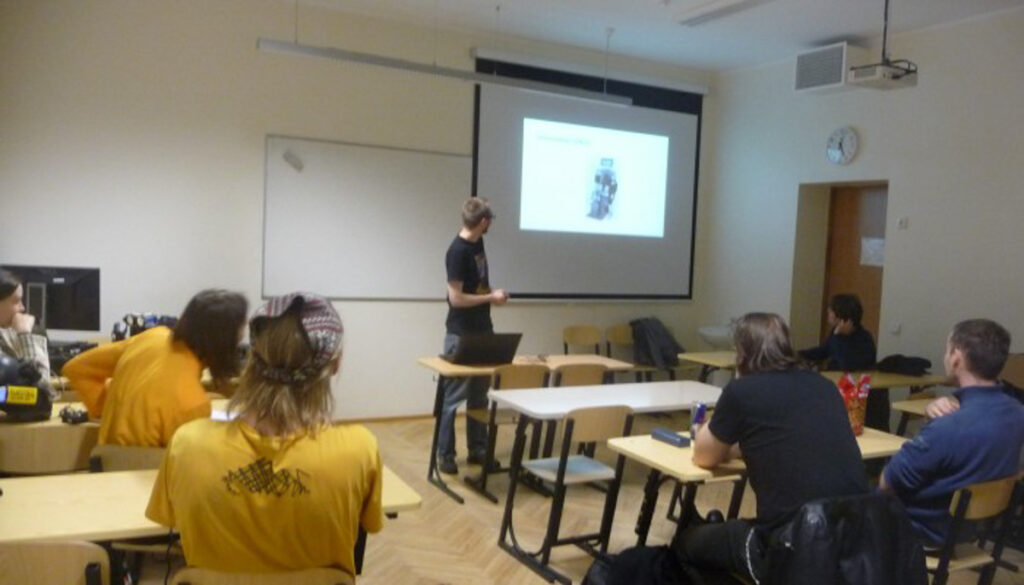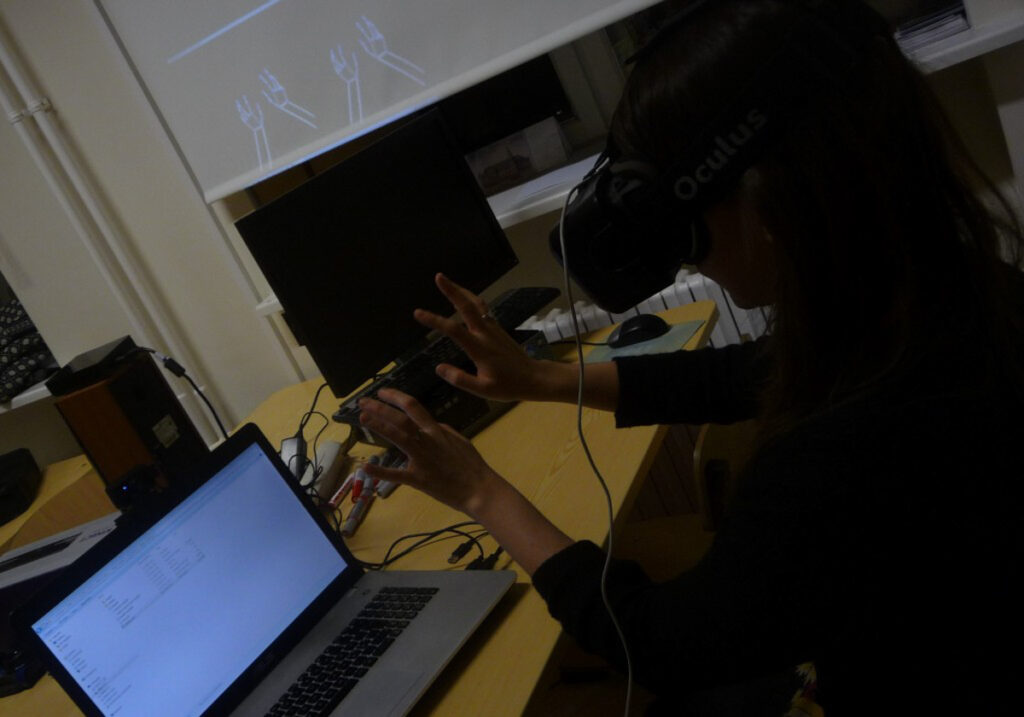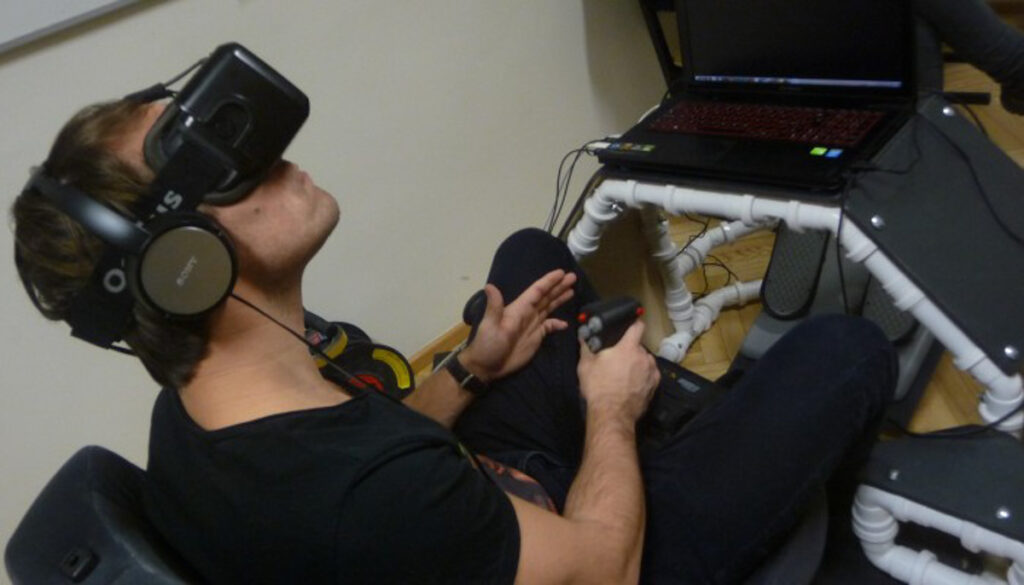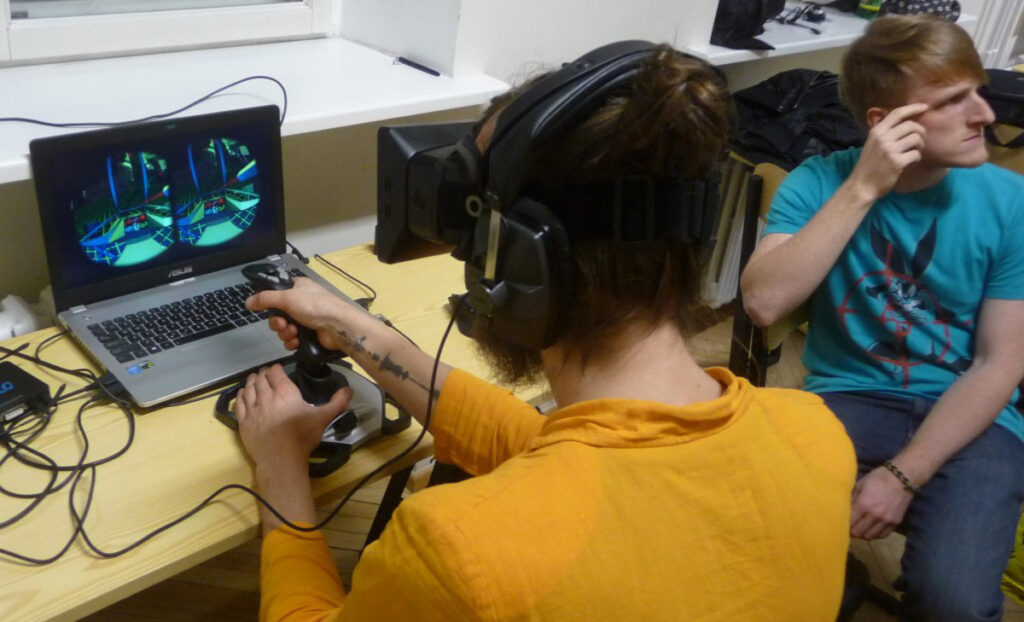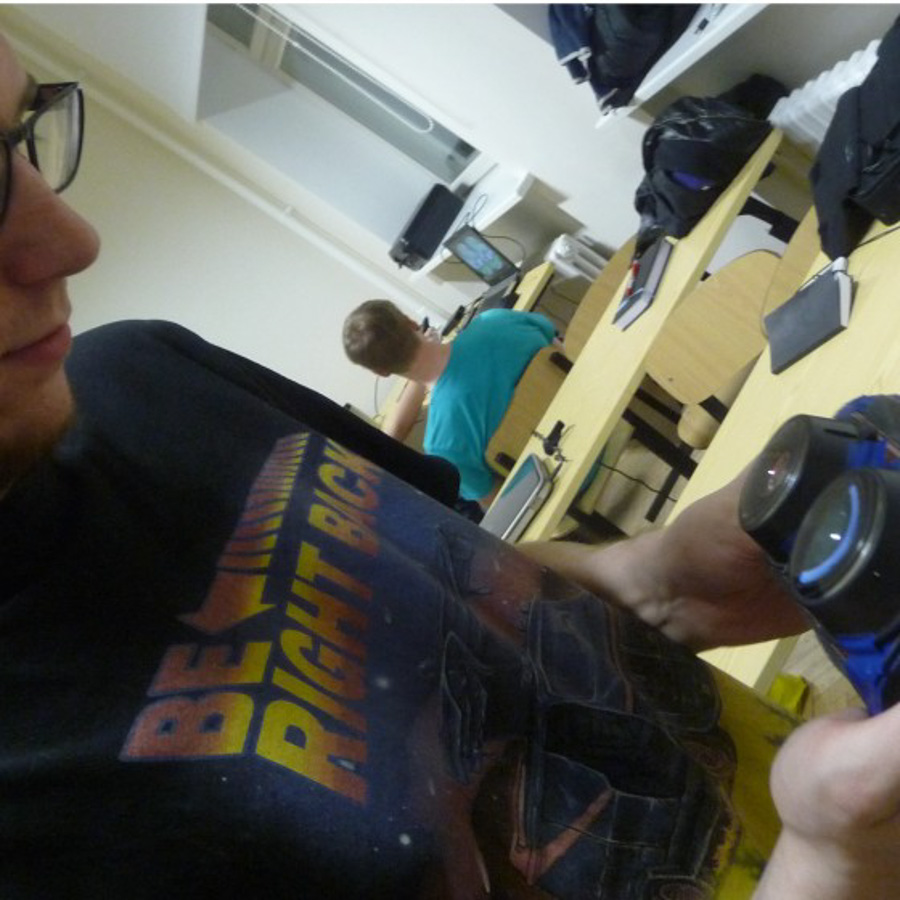
May 7th 2016 saw another round of EEVR, this time carrying the number 9. Although one of our main speakers happened to get ill just before the meetup, we still managed to easily fill many hours of interesting talks and demos. We were once again hosted by Digix at the Baltic film- and media school. This time we even got to be in a movie theater!
First up was an EEVR regular Filipp Keks, talking about his recent visit to the GDC. In terms of VR the GDC hall was packed with all sorts of new headsets, young crazy developers and VR-specific talks. One of the most interesting demos Filipp tried was a tracking solution that could identify both the players and any other objects that had appropriate markers. In the demo there was a basketball you could reliably bounce around without losing tracking.
Ofcourse, once you threw the ball too high, the virtual version would stop mid-air and before you knew it, you got smacked in the head with reality. The solution was cool, and very-very expensive. There was also some technology for untethered VR that actually worked, so we might see VR cabels dissapearing sooner than we might think.
Next we had a presentation by Aleksander Väljamäe, a local academic and researcher who has been heavily involved in VR related science since the beginning of the 2000s. The presentation gave a really brief introduction to his wealth of work already done in the VR space. This included auditory illusions, the sense of self-motion, out of body experiences etc. Currently Aleksander is setting up a new lab in Tallinn University to investigate brain-computer interactions through media. For anyone dealing with VR audio, this talk will surely give some interesting new insight.
Check slides.
The demo sessions were fun as always. A few people got to try out a public speaking anxiety simulator by Madis Vasser, some had the chance to try out Battle 360 curesy of Maksim Vladimirovich, many tried the new Oculus Home demos brought by PsychoBus and EVERYONE stood in line for the HTC Vive show by Mario Saarik!
More pictures of the event can be found here.
Until next time (in july?) at EEVR #10 in Tartu!
